https://ebookmass.com/product/innovative-food-
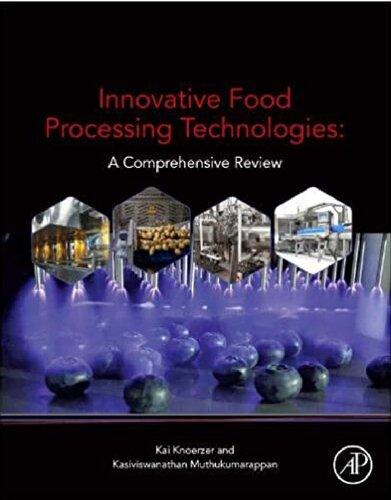
More products digital (pdf, epub, mobi) instant download maybe you interests ...
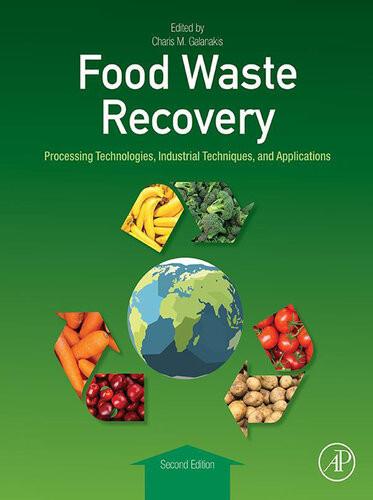
Food Waste Recovery: Processing Technologies, Industrial Techniques, and Applications 2nd Edition Charis M. Galanakis
https://ebookmass.com/product/food-waste-recovery-processingtechnologies-industrial-techniques-and-applications-2nd-editioncharis-m-galanakis/
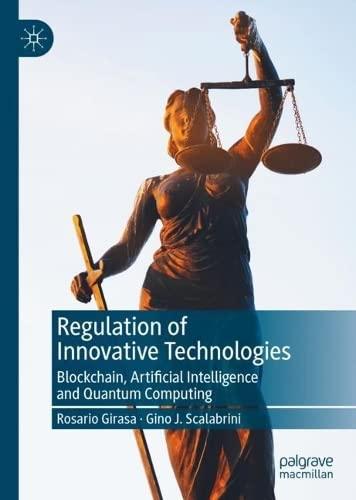
Regulation of Innovative Technologies: Blockchain, Artificial Intelligence and Quantum Computing Rosario Girasa
https://ebookmass.com/product/regulation-of-innovativetechnologies-blockchain-artificial-intelligence-and-quantumcomputing-rosario-girasa/
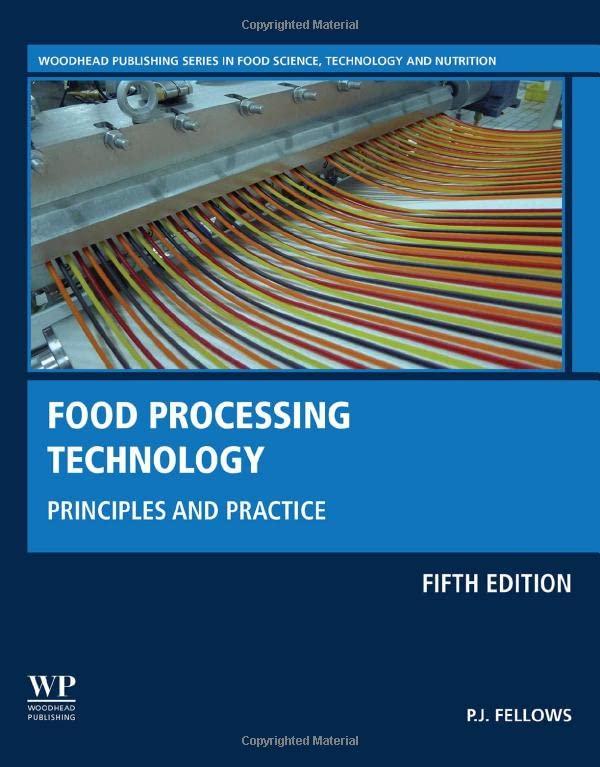
Food Processing Technology: Principles and Practice 5th Edition P.J. Fellows
https://ebookmass.com/product/food-processing-technologyprinciples-and-practice-5th-edition-p-j-fellows/
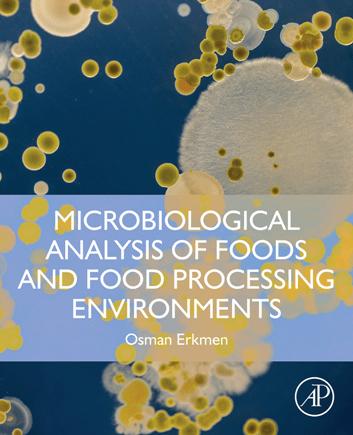
Microbiological Analysis of Foods and Food Processing
Environments Osman Erkmen
https://ebookmass.com/product/microbiological-analysis-of-foodsand-food-processing-environments-osman-erkmen/
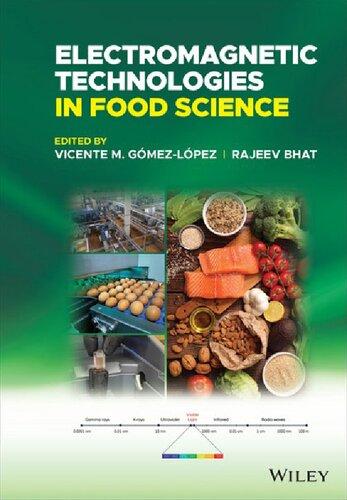
Electromagnetic Technologies in Food Science Vicente M. Gómez-López
https://ebookmass.com/product/electromagnetic-technologies-infood-science-vicente-m-gomez-lopez/
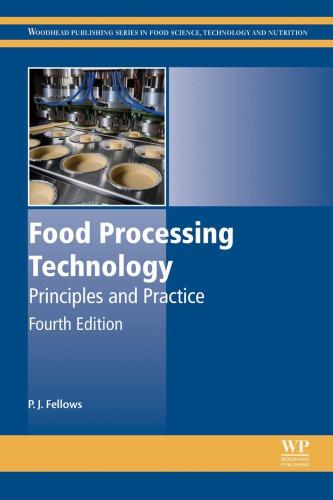
Food processing technology: principles and practice 4th ed Edition Peter Fellows
https://ebookmass.com/product/food-processing-technologyprinciples-and-practice-4th-ed-edition-peter-fellows/
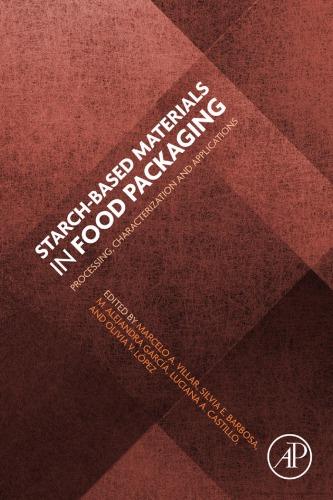
Starch-based materials in food packaging processing, characterization and applications Barbosa
https://ebookmass.com/product/starch-based-materials-in-foodpackaging-processing-characterization-and-applications-barbosa/
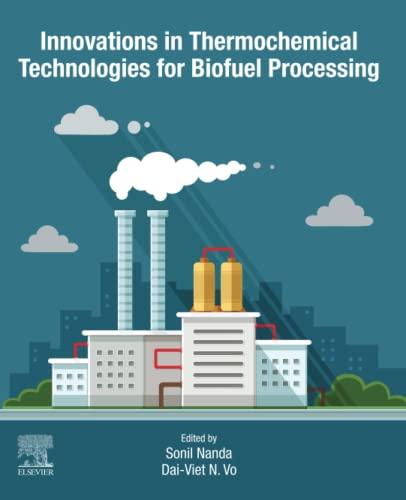
Innovations in Thermochemical Technologies for Biofuel Processing 1st Edition Sonil Nanda
https://ebookmass.com/product/innovations-in-thermochemicaltechnologies-for-biofuel-processing-1st-edition-sonil-nanda/
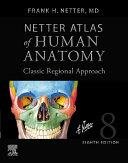
Netter Atlas of Human Anatomy-Classic Regional Approach, 8e (Mar 29, 2022)_(0323793738)_(Elsevier) NOT TRUE PDF Frank H. Netter
https://ebookmass.com/product/netter-atlas-of-human-anatomyclassic-regional-approach-8e-mar-29-2022_0323793738_elsevier-nottrue-pdf-frank-h-netter/
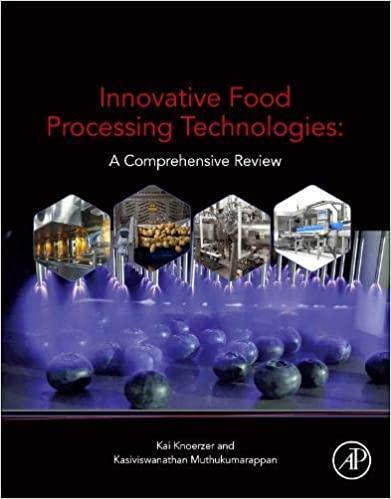
RobertSevenich,CorneliaRauh,andDietrichKnorr, DepartmentofFoodBiotechnologyandFoodProcessEngineering, TechnischeUniversitätBerlin,Berlin,Germany
©2021ElsevierInc.Allrightsreserved.
1.01.1Introduction
1.01.2VegetativeMicroorganisms,Spores,Viruses,Parasites,BacteriophagesandNematodes2
1.01.2.1VegetativeMicroorganisms
1.01.2.2Spores
1.01.2.3Viruses,Bacteriophages,ParasitesandNematodes4
1.01.3ChemicalReactions:InfluenceonAllergens,Toxins(FoodBorneandAgriculturallyBased)5 1.01.3.1Allergens
1.01.3.2Toxins
1.01.3.2.1FoodProcessingContaminants
Today,theconsumers’ demandforhighqualitysafefoodsrequiresthedevelopmentandapplicationofemergingprocessingtechnologiesforthegentlepasteurizationandsterilizationoffoods.Therefore,thefoodindustryislookingfornewwaystoproduce safe,healthyandstablefoods.Onewaytomeetthisaimisapplyinghighpressure,intheorderof600MPa,tofoods,whichis referredtointheliteratureascoldpasteurization(Matseretal.,2004; Knoerzeretal.,2010; Mújica-Pazetal.,2011).Currently, high-pressureprocessing(HPP)inthefoodindustryissolelyusedforpasteurizationpurposes.Thetrendofusinghighpressure asatechnologyforpasteurizationofdifferentkindsoffoods,e.g.,juices,ham,saucesandseafoodisagrowingsectorinthe foodindustrysincethe1990’s(HoganandKelly,2005).Pasteurizationoffoodswithhighpressure(HP)iswellestablishedin thefoodindustry.In2018,500industrial-scalehighpressuresystemswereinuseworldwide,producingapprox.Fourmillion metrictonsannuallyofpressurizedfoods.Thereisstillaneedforresearchinthis field,e.g.,consideringtheimpactonfoodstructure,foodquality,microorganisms,enzymeactivity,andnutrients.Furthermore,thereisahighacceptanceofpressurizedfoodson theconsumersideduetothecleanlabelandhealthpromotingattributesthetechnologyoffers(Olsenetal.,2010),withoutwhich industrialapplicationwouldbelessattractive.Despitethesteadilyincreasingcommercialproductionofhighpressuretreatedfood, someimportantscientificandtechnologicalquestions,aswellassomepotentialotherapplicationsofHPParestillunresolved.One oftheseissuesistheimpactofdifferentintrinsicandextrinsicfactorsontheinactivationmechanismsofvegetativebacteriaand bacterialsporesunderpressure.Tounraveltheimpactofthedifferentpressureandtemperaturecombinationsonapossiblecell deathorrecovery,detailedanalysesaboutthephysiologicalstateofthecellsandhowtheyareinfluencedbydifferentfoodcomponentsareneeded.AccordingtoLeChatelier’sprinciple,inasystemfacingashiftofequilibrium,allcellularcomponentsareaffected byhighpressure,includingthecellmembraneanditsmembraneproteins,enzymesandribosomesaswellastheentirecellmetabolism(WinterandJeworrek,2009; Georgetetal.,2015).Ingeneral,prokaryoticcellsshowahigherresistancetowardpressurethan eukaryoticcells.Yeastsandmoldsareingeneralmorepressuresensitive,althoughascosporesofsomemoldssuchas Byssochlamys and Talaromyces canbeverypressureresistant(Smelt,1998; Considineetal.,2008; Georgetetal.,2015).Withinprokaryotes,gram positivemicroorganismssuchas Bacillus,Listeria,Staphylococcus and Clostridium haveathickerpeptidoglycanlayerandaretherefore morepressureresistantthangram-negativemicroorganisms(Smelt,1998; Considineetal.,2008; Dumayetal.,2010).Themechanismsleadingtocelldeathhavebeeninvestigatedinseveralbacterialspecies(Huangetal.,2014).However,theparticularevents leadingtoinactivationarenotwellunderstood(Cheftel,1995; BuckowandHeinz,2008; Klotzetal.,2010).Highpressurebetween 300and800MPaatambienttemperaturescanleadtotheunfoldinganddenaturationofimportantcellenzymesandproteinsin vegetativemicroorganisms(Rastogietal.,2007; Knorretal.,2011a,b),butthespecificpressureeffectsonmicroorganismsaremore
complexandseveraldifferentmechanismsleadingtocelldeathcaninteractwhenhighpressuresareapplied.Primarily,pressureat asufficientlyhighlevel,caninduceenzymeinactivation,membraneproteinsdenaturationandcellmembranerupturecausedby aphasetransitionofthemembraneandchangeinits fluidity(Anantaetal.,2005; Georgetetal.,2015).Thepressurelevelneededto achievea5log10 reductionofpathogenicmicroorganismindifferentfood-productsrangesfrom300to800MPa(Hendrickxetal., 2001)andoftensynergybetweenpressureandtemperatureisobserved(BuckowandHeinz,2008).Byincreasingtheprocesspressure,itispossibletodecreasethetemperatureneededtoachievethesameinactivation.Accordingtotheliterature,thepressure inducedeffectsleadingtocelldeathofvegetativemicroorganismscanbeattributedtofourfactors:
(i)Proteinandenzymeunfolding,includingpartialorcompletedenaturation
(ii)Cellmembranesundergoingaphasetransitionandchangeof fluidity
(iii)Disintegrationofribosomesintheirsubunits
(iv)IntracellularpHchangesrelatedtotheinactivationofenzymesandmembranedamage(Knorretal.,2011a,b; MolinaHöppneretal.,2013; Georgetetal.,2015)
Further,theinfluenceonthefoodmatrixstillneedsclari ficationintermsofwhatcompoundsareformedordestroyedincomparisontotheconventionalprocess.Also,aclearassessmentofwhatthepotentialandlimitsofHPPare,isstillmissingtothispoint. Somewell-knownpotentialandlimitsare:
(i)AdvantagesandPotentials
Rapid,quasi-instantaneousuniformdistributionthroughoutthesample;Minimalorreducedthermalexposure;Instant temperatureincreaseandsubsequentcoolingupondepressurization;Suitableforhighmoisture –contentfoods;inpackage processing;Suitableforbothliquidandpumpablefoods;Independentofproductshapeandsize;Opportunityfornovel productformulation;Distinctproductsthroughpressureeffectssuchasproteindenaturation,carbohydrategelatinization,and fatcrystallization;Withinsomepressure-thermalboundaryconditions,pressureacceleratesmicrobialinactivation;Consumer acceptanceasaphysicalprocess.
(ii)Limits
Batchorsemi-continuousoperation;Preheatingstepforpressure-assistedthermalprocessing(PATP)required;Thermal nonuniformityduringPATP;Notsuitableforproductscontainingdissimilarcompressibilitymaterialssuchasfoams; Throughputlimitedduetobatchoperation;Variableefficacyinenzymeinactivation;pressurealonecannotinactivatebacterial spores;Higherprocessingcosts.
SomeauthorshavelookedbeyondtheobviousapplicationofHPP,otherthanjustmimickingofthermalprocessing.Anoverview ofsomeoftheapplicationscanbefoundintheliterature(Smelt,1998; Oeyetal.,2008; Verbeystetal.,2010; VanDerPlancken etal.,2012).Mostoftheseauthorsarereferringtothepromisinguseofhigh-pressureprocessingasagentlepreservationtechnique butarealsomentioningthepossibleapplications,ifthefoodsafetyisgiven,toaltertexture,increasethebioavailabilityofcertain healthpromotingcompounds,allergenicityreductionaswellasvitaminretention.
Initially,theempiricapproachoftrialanerrorwasused,whichdrovetheevolutionofhighpressureprocessingfrominactivation studiesofvegetativemicroorganism(Hite,1899; TimsonandShort,1965; Saleetal.,1970; Metricketal.,1989; Cheftel,1995; Fiorettoetal.,2005; Georgetetal.,2015)toinactivationofenzymes(Silaetal.,2008; Rauhetal.,2009; Knorretal.,2011b; Grauwet etal.,2012)toshuckingofcrustaceans(Kingsley2014)tosporeinactivation(Saleetal.,1970; Reddyetal.,2003; Blacketal.,2007; Olivieretal.,2012; SetlowandMarkland,2012; Reinekeetal.,2013a,b; Olivieretal.,2015; SevenichandMathys,2018)tostructure/textureinducedbyhighpressure(Oeyetal.,2008; Silaetal.,2008; SikesandWarner,2016; Balasubramaniametal.,2016; Thai UnionGroup,2017; Simetal.,2019)tocurrentlythelatestfrontieroftheinfluenceonchemicalreactionspathways(e.g.,degradationofvitamins,oxidationofpolyunsaturatedfattyacidsandmitigationoffoodprocesscontaminants)(Oeyetal.,2008; Verbeystetal.,2010; VanDerPlanckenetal.,2012; Sevenichetal.,2013).Toseebeyondtheobvious,onemustaskwhatisdifferent comparedtothethermalprocessesandwhy.Howcanthisdifferencebeusedasapotentialandadvantagetocreateforexamplenew functionalfoodingredients,foodpropertiesandhealthfoods?Someoftheseaspectsaretackledandcoveredbysomerecentreviews (Balasubramaniametal.,2016;Huangetal.,2017).
Anotherissuethatneedsfurtherresearchfocuscouldbetothinkofnovelcombinationprocessesasforexampledoneinthepast withHPP/PEF,highpressurethermalsterilization,pressureassistedthermalsterilization(PATS),pressureinducedfreezing(PIF), pressureassistedfreezing(PAF),highpressurehomogenization(HPH)andhighpressureextraction(Volkertetal.,2008; Parketal., 2013; Huangetal.,2013; Sevenichetal.,2015a,b; SevenichandMathys,2018).
Thisarticlewillreviewtherecentliteratureandwilldiveintodifferentareaswheretheauthorsconsiderhighpressureprocessing tohaveasigni ficantimpactinthecomingyears.
1.01.2VegetativeMicroorganisms,Spores,Viruses,Parasites,BacteriophagesandNematodes
1.01.2.1VegetativeMicroorganisms
TheuseofHPPtoinactivatepathogenicvegetativemicroorganismshasbeenlargelyinvestigatedforthepasteurizationofcommercialproductsfordecades(BuckowandHeinz,2008).In1899, Hite(1899) was firsttoconductexperimentsusinghighpressurein combinationswithfoodstoextendshelflife,andreportedthatmilkstayedsweetlongerafterthetreatmentwithhighpressure.Since
then,signi ficantresearcheffortshavefocusedonunderstandingtheunderlyingmechanismsoftheinactivationofmicroorganisms underhighpressureconditions.HPPoffersalowerthermalinputintotheproductbycomparisonwithconventionalthermaltreatmentandthereforeincreasesthequalityofthefoodwhilemaintainingfoodsafety(Smelt,1998; HoganandKelly,2005; Balasubramaniametal.,2008; Bermudez-AguirreandBarbosa-Canovas,2011; Barbaetal.,2012).Despitethesteadilyincreasing commercialproductionofhighpressurepasteurizedfoodwithseveralmillionsoftonsperyear(Aganovicetal.,2017),some importantscienti ficandtechnologicalquestionsarestillunsolved.
Oneoftheseissuesistheimpactofdifferentintrinsicandextrinsicfactorsontheinactivationmechanismsofvegetativebacteria andbacterialsporesunderpressure.Tounraveltheimpactofthedifferentpressureandtemperaturecombinationsonapossiblecell deathorrecovery,detailedanalysesaboutthephysiologicalstateofthecellsandhowtheyareinfluencedbydifferentfoodcomponentsareneeded,Inrecentyears,acommonworld-wideconcernhasbeenfoodborneoutbreakswithpathogenslikeEHEC (O157:H5;O104:H4)andothers(AdleyandRyan,2016).Thecontaminationofthefoodsupplywithspoilageandpathogenic microorganismscontinuestobeaglobalproblem,despitethewiderangeofpreservationmethodsemployed(Kaczmareketal., 2019).Despitesignificantadvancesinfoodprocessingtechnologies(hurdleconcept,newinnovativenon-thermaltechnologies), anannualestimated76millioncasesoffoodborneillnessesoccurintheUSalone,resultinginapproximately5000deaths(Scallan etal.,2011).ThereportbytheUSCenterfordiseasecontrolandpreventioncenterstatesthatmost(58%)illnesseswerecausedby norovirus,followedbynontyphoidal Salmonella spp.(11%), Clostridiumperfringens (10%),and Campylobacter spp.(9%).Leading causesofhospitalizationwerenontyphoidal S. spp.(35%),norovirus(26%), C. spp.(15%),and Toxoplasmagondii (8%).Leading causesofdeathwerenontyphoidal S. spp.(28%), T.gondii (24%), Listeriamonocytogenes (19%),andnorovirus(11%).Intheyear 2000,e.g.,approximately2.4millionpoundsofbeefwererecalledduetopossiblecontaminationwith Escherichiacoli O157:H7 (Kaczmareketal.,2019).NeweststudiesfromtheWHO(2015)onfoodbornediseasescausedbypathogenicmicroorganisms, suchas Salmonella, Campylobacter, EHEC and Norovirus,showthatworldwide1in10peoplefallilleveryyearfromeatingcontaminatedfoodand420,000dieasaresult.Here,theapplicationofhighpressureincombinationwithmildtemperaturesatpressures between300and700MPacouldpossiblybeusedtoinactivatevegetativepathogenicmicroorganismsaswellasseveralenzymes, whichcausefooddeterioration.Theresistancetowardtemperatureofthepathogenic Escherichiacoli strainsisusuallyhigherthan itsnon-pathogeniccounterpart(Garcia-Graellsetal.,1998).Hence,amoreintenseheattreatmentneedstobeapplied.Themore complexandresistantthemicroorganismthemoreintensemustbethetreatment.Incomparisontothepathogenic E.coli, higher temperaturesandhigherpressuresmustbeappliedtoinactivatespores(Reinekeetal.,2013a,b).Thisbecomesevenmorecomplex ifthisisconductedinarealfoodsystemsinceherebaro-protectiveeffectscanoccurandthesevereheattreatmentcanleadto unwantedchangesinthefoodmatrix,leadingtotheformationofunwantedandpossiblyunhealthycompoundsinthefoodstuff. Thecomparisonofpressureresistanceamongvegetativefood-bornepathogensrevealedthatstrainsofEscherichia coli O157:H7were themostresistantsofarencountered.The USDA(2012) hasrequirementsof E.coli O157:H7astheindicatorstrainforreprocessing, anHPPprocessthatachievesa5-log10 E.coli O157:H7reductionshouldbesufficientenoughtoproducemicrobiallysafeproducts.
OtherpossibleindicatorstomonitorifHPPissufficientlyappliedduringprocessingisbycoppertabletsincombinationwith Heckelvalue(rateofdensitychangeofe.g.,chopperunderpressure).Theincreaseindensityovertheentirepressurerangeislinear. Thetabletscanbeplacedinsidethevesselaswellasdirectlyintothefood.Measurementsat400MParevealedthatfortrialswith hamtheproductexperienced9MPalessthanthesurroundingwater.Thiscouldleadtoshortcomingsintermsofsufficientinactivation.Thetrialwasnotrepeatedat600MPa(MinerichandLabuza,2003).
Anotherphenomenonthatcouldleadtofalseresultsintermsofinactivationkineticisagglomeration,whichisverycommonfor vegetativemicroorganismsaswellasspores.Theeffectivenessofinactivationprocessesisoftenverifiedbychallengetestsusing foodsthathavebeenspikedwithhighlyconcentratedmicrobesuspensions.Duetopreparation,storageandhandlingofthose suspensions,theclumpingandtheformationofaggregatescanhardlybeavoided.Thisphenomenoniswellknown, firstreported ontheeffectofsporeagglomerationsoninactivation.However,theimportanceforthequantitativeassessmentofsurvivorsininactivationexperimentshasrarelybeenaddressed.Itsimportancebecomesevidentbythefollowing:Agglomeratesproduceonecolony forahighnumberofcellsupto103 CFU’s.Consequently,agglomeratesofunknowncellnumbersarealwayscountedasonespore untilallsporesintheagglomerateareinactivated.Beyondthis,agglomerationanddisintegrationcanchangethecolonyforming unitspermilliliter.Inthiscontextamodelforthediscussedphenomenonwasdeveloped(MathysandHeinz,2006).
1.01.2.2Spores
Theinactivationofbacterialendosporesbypressureisgenerallyconsideredtorelyonpressure-inducedsporegermination,followed byinactivationofgerminatedspores(Setlow,2003; Margoschetal.,2004; Margoschetal.,2004).Inthepastdecades,other possiblenon-physiologicalpathwaysofsporegerminationhavebeendetected.Non-nutrientgerminationcanbefurthercategorizedintoa(recentlydiscovered)secondphysiologicalandseveralnon-physiologicalroutes.Thephysiologicalroutesinclude germinationinitiatedbyeukaryotic-likeserine/threoninekinase,whichislocatedintheinnersporemembranelikenutrientreceptors.Thiskinase,whichispresentin Bacillus and Clostridium species,recognizespeptidoglycanfragments.Non-physiologicalgerminationpathwaysinitiatesporegerminationbybypassingindividualgerminationsteps.Thiscouldbestimulatedbyphysiochemical agents,suchasexogenousCa-DPA(Paidhungatetal.,2002; Moir,2006),whichdirectlyactivatestheCLECwlJ,orcationicsurfactantssuchasdodecylamine(Setlow,2003),whichinterfereswiththeinnersporemembraneandcausesadirectreleaseofCa-DPA. Atpressuresbetween100and400MPaithasbeenshownthatthenGeRof Bacillussubtilis and Bacilluscereus aretriggered.Thespores germinatedquitewellbetweenpressuresof100 –200MPaandledtoamaximum4log10 inactivationbutthepressureinduced
physiologicalgerminationdecreasedforhigherpressures,indicatingthatotherpathwaysmustbeactive(Wuytacketal.,1998; Paidhungatetal.,2002; Reinekeetal.,2013a,b).Atreatmentof200–400MPaat40 Cfor30minshowedgerminationofthesporesbut negligibleinactivation(Wuytacketal.,1998).
Toachieveaquickandsuddeninactivationofspores,whichisrelevantforfoodprocessing,pressuresabove500MPamustbe appliedincombinationwithtemperaturesabove60 C.Undertheseconditions, Paidhungatetal.(2002) wereabletogerminate B.subtilis sporesthatlackallmajornutrientreceptors.Thissuggestsadirectopeningofthespores’ Ca–DPAchannels,agermination mechanismidentifiedasactiveat200MPaandmoderatetemperatures(<50 C)using B.subtilis mutantstrainsthatlackthenGeR. These findingswerealsoverifiedby Reinekeetal.(2012) forpressures 600MPaandtemperatures 60 C.Thefollowingstep, whichisrapidreleaseofCa–DPAunderpressure,isaccompaniedbycorehydration.Thisstepofgerminationisthecrucialstepwith regardtolossofresistance,anditisthereforeofgreatinterestforavarietyofsterilizationtechniquesandresearch(Reinekeetal., 2013a,b).Therefore,theabilityofthesporetoretaintheDPAaslongaspossibleundertheseconditionsbecomestheratelimiting stepofthesporeinactivation(Margoschetal.,2006; Reinekeetal.,2013a,b).ThissuggeststhatthestructuremostsusceptibletoHP (600MPa)andhightemperatures(60 C)istheinnersporemembraneoritsassociatedmembraneproteins(Reinekeetal., 2013a,b).Atpressuresaboveorequalto400MPa,whenanopeningoftheCa-Dipicolinicacid(DPA)-channelsoccur,the followinghappens:(i)DPAisreleasedfromthesporecore;(ii)thesporecoregetshydrated;and(iii)thesporebecomesthermoandpressuresensitiveandcanbeinactivated(Reinekeetal.,2012).Further,athresholdpressureof600MPawasestablished;atand abovethispressureleveltheDPA-releaseisdominatedbytemperature.Toguaranteeasuccessfulinactivationofsporesbypressures of600MPa,manyresearchersrecommendatreatmentat90 –121 C(Margoschetal.,2004; JulianoandBarbosa-Canovas,2005; Margoschetal.,2006; Mathysetal.,2007; Knorretal.,2011b; Georgetetal.,2015; Sevenichetal.,2016)duetothesynergisticeffect pressureandtemperaturehaveonthesporeinactivation(Olivieretal.,2015).Incomparisontoconventionalretorting,thiscould reducethethermalloadappliedtotheproductwithoutaffectingthesafetyorthequalityofthefood.Twosterilizationapproaches canbederivedfromthis,bothofwhichneedtheadiabaticheatofcompressiontoreachthetargettemperature:
• Pressureassistedthermalsterilization(PATS):pressureisneglectedandonlyseenasthemethodtoreachtheendtemperature faster(Dunneetal.,2010)
• HighPressureThermalSterilization(HPTS)whichtakesintoaccounttheimpactofpressureonthesporeinactivation(Mathys, 2008; Knorretal.,2011)
Recently,thedifferencesingerminationunderpressurebetween Clostridium sporesand Bacillus wererevealed,showinginteresting insights(Paredes-Sabjaetal.,2011; LenzandVogel,2015; Doonaetal.,2016).In Bacillus spp.,DPAreleasetriggerscortexlytic enzyme(CLE)activation;CLEactionisnotessentialforDPArelease,butitcanaccelerateit.In Clostridiumdifficile or C.perfringens,theinitiationofcortexhydrolysisbySleCprecedesandtriggersDPArelease.Using C.difficile spores,whichlackinner sporegerminantreceptors,550MPatreatmenttriggeredDPArelease.However,sporegerminationwasnotcompletedbecausecortex hydrolysisisnotactivatedbyDPArelease. C.perfringens sporesbecameactivatedbyhighpressuresduringthecome-uptimeto 550MPa.Itcouldbeshownthat(i)theactionof550MPadirectlystimulatedDPAreleaseand(ii)activationofinnermembrane germinantreceptorsduringthecome-uptimeto550MPaandthatthisactivatedstateofgerminantreceptorsismaintainedforawhile andactivatescortexlyticenzymes(Doonaetal.,2016).Thisisonlyvalidiftemperaturesbelow80 Careused;ifaheatshockT >80 Cisapplied,sporegerminationcanbecompleted.These findingswereveryinterestingsincetheyshowedhowdifferentspores areandhowimportantprocessknowledgeandmicrobiologicalknowledgearetocreatesafeprocesses,suchastheHPTS.
Thequestionofwhatkindofindicatorstrainshouldbeusedistothispointstillnotsettled.Someresearchersusethenonpathogenic Bacillusamyloliquefaciens,insteadof Clostridiumbotulinum, asasurrogatetocheckforsufficientinactivationrespectively sterilizationsuccess(Olivieretal.,2015; Margoschetal.,2006; Sevenichetal.,2016).Sinceotherstrainsusuallyusedtotestfor sterilizationlike Geobacillusstearothermophilus and Clostridiumsporogenes areveryhighpressurehightemperaturesensitive(Sevenich etal.,2016).Itisalsoimportanttonotethatonecannotconcludebasedoninactivationkineticsobtainedinbufferormodelfood systemshowtheinactivationofsporeswillbeinrealfoodsystems(Georgetetal.,2015; Sevenichetal.,2015a,b; Sevenichand Mathys,2018).TheUSFDArecommendstestingfora4log10 inactivationof Clostridiumbotulinum (Dunne,2009;BalasubramaniamandLelieveld,2016).
1.01.2.3Viruses,Bacteriophages,ParasitesandNematodes
Intotal,thereare31knownpathogensthatcausefoodbornediseases,21arebacteriarelated(E.coli, Salmonella, Listeria etc.), five virusesand fiveparasites(AdleyandRyan,2016).Especiallyvirusesandparasitesaregenerallyunderrecognizedifitcomestofood bornediseases.Thegrowingglobalinterconnectionofthefoodsupplychainandmoresophisticatedanalyticaltoolsarereasonsfor theincreaseddiagnosisoffoodbornediseases(Dornyetal.,2009).Foodbornediseasesalsohaveanimpactontheeconomy,each incidentwascalculatedwith 1500$/personandatotalannuallyestimatedcostof$75billion,intheUnitedStatesin2015alone (Moyeetal.,2018).Beforegoingintofurtherdetailonhowhigh-pressureprocessingmighthaveanimpactontheinactivationof theseorganisms,ashortintroductiononwhatdefinesthesegroups,wheretheycancomeincontactwithfoodsandwhatdisease theycancause,isgiven.
(i)Viruses/Bacteriophages:Avirusisasmallinfectiousvehiclethatcannotgroworreproducewithoutalivingcell.Avirusinvades livingcellsandusestheirchemicalmachinerytokeepitselfaliveandtoreplicateitself.Itmayreproducewith fidelityorwith
errors(mutations);thisabilitytomutateisresponsiblefortheabilityofsomevirusestochangeslightlyineachinfectedperson, makingtreatmentdifficult.Incommonusage,thetermvirusisusedtodescribevirusesthatcanonlyaffecthumans.Viruses causemanycommonhumaninfectionsandarealsoresponsibleforseveralrarediseases.Thetwomainfoodbornevirusesof concerninthefoodindustryarethe Norovirus and HepatitisAvirus. In2011,the Norovirus wasthemaincauseoffoodborne illnessesintheUnitedStates(AdleyandRyan,2016; Panetal.,2016).
Therearemainlytwofoodtypesthathaveahighriskforcontaminationduringproductionorharvest.Onewouldbefruitsand vegetables,wherethecontaminationcanbeduetotheuseofnon-potablewaterforcleaningorfecallycontaminated fingers (Kingsley,2013).Thesecondfoodtypehavingelevatedriskofcontaininghighamountsofvirusesareshellfish(oysters,clams, cocklesetc.).Duetotheirnatureas filterfeedersandthehighamountsofvirusesfoundinseawater(9 108 virons/mL),they canaccumulatevirusesasmuchas1000-fold(Kingsley2013, 2014).Bacteriophagesarevirusesthatcanonlyattackand replicateinbacteriaandarchaea.Phageshavebeenusedsincethelate19thcenturyasanalternativetoantibioticsintheformer SovietUnionandCentralEurope,aswellasinFrance.Theyareseenasapossibletherapyagainstmulti-drug-resistantstrainsof manybacteria(phagetherapy).Since2006,theUnitedStatesFoodandDrugAdministration(FDA)andUnitedStates DepartmentofAgriculture(USDA)haveapprovedseveralbacteriophageproducts.LMP-102(Intralytix)wasapprovedfor treatingready-to-eat(RTE)poultryandmeatproducts.Inthatsameyear,theFDAapprovedLISTEX(developedandproduced byMicreos)usingbacteriophagesoncheesetokill Listeriamonocytogenes bacteria,inordertogivethemgenerallyrecognizedas safe(GRAS)status.InJuly2007,thesamebacteriophagewasapprovedforuseonallfoodproducts.In2011,USDAconfirmed thatLISTEXisacleanlabelprocessingaid.Researchinthe fieldoffoodsafetyiscontinuingtoseeiflyticphagesareaviable optiontocontrolotherfood-bornepathogensinvariousfoodproducts(Moyeetal.,2018).
(ii)Parasitesincludingnematodes:Parasitismisarelationship(consumer-resourceinteraction)betweenspecies,whereone organismlivesonorinanotherorganismontheexpenseofthehost.Parasitesincludeprotozoans,tapeworms,nematodesetc. Someofthemajorparasitesthatareofconcernforthefoodindustryaree.g., Echinococcusmultilocularisassociated withberries andwater; Cryptosporidium spp.arebeginningtobeassociatednotonlywithwater,butalsowithsalads; Trypanosomacruzi is foundinjuices; Trichinella spp.arenowadaysfoundingameanimals; Anisakiasis isbecomingaglobalproblemastheworld developsatasteforsushi(Robertson,2018).
Literatureonthepressureinactivationofvirusesisscarceandthereareonlyahandfulofpapersthataredealingwithinactivation studiesofvirusesinfoods(Kovaetal.,2010; Kingsley2013, 2014; Balasubramaniametal.,2015).Especiallyresearchdealingwith theinactivationmechanismarelimited(Panetal.,2016).Researchwithhumannorovirusstrainsandvirusesingeneralisdifficult duetothelackofsuitablelaboratoryanimalsandtheinabilitytopropagatethevirusinvitro.Astudyconductedby Wiezorek (2012)with Pixunavirus,whichisasurrogateformanyhumanparthenogenic alphavirus,showedthat Pixuna couldbeinactivated by109 withatreatmentat150MPa/37 C.
Theinactivationofvirusesviahighpressureprocessingisassociatedwithalteringtheproteinslocatedatthecapsidofthevirus. DuetoconformationchangeoftheseproteinsthevirusisnotabletodockontothehostcellandreleasetheRNAintothecell (Moronietal.,2002; Kovaetal.,2010; Kingsley,2013; Louetal.,2015).Non-envelopedvirusesaregenerallymoresensitivetoward highpressureprocessingincomparisontoenvelopedviruses,whichhavealipidenvelope.Theinactivationofvirusesisdepending, asvalidforsporesandbacteria,onthetemperature,pressureandtimeapplied(Panetal.,2016).Pressuresabove400MPaareefficientenoughtoinactivatemostviruses(Kovaetal.,2010).Although,higherpressuresdonotnecessarilyneedtoleadtoamore efficientinactivationofamoreresistantvirus.
Thestudiesfoundintheliteraturesuggestthatviruseslikehuman norovirus(Norwalk8fIIb) inoculatedinoysters(104)canbe completelyinactivatedby600MPaand5min(Leonetal.,2011).Studieswith HepatitisAvirus alsoinoculatedinoysterswith106 showedaninactivationofmorethan3log10 after400MPaand1min(Kingsley,2013). Rotavirus inbuffersolutionwasinactivated by8log10 at300MPaand2min(KhadreandYousef,2002).Verypressureresistantaretheviruses Aichivirus and Poliovirus,which werecompletelyresistantat600MPaand5min(Kingsleyetal.,2002).
Forviruses,theUSFDAisproposingamaximumdesiredreductioninviruslevelof5log10 (Panetal.,2016).
Theliteratureonnematodesandotherparasitesisveryscarceandvirtuallynon-existing.Thereisonepublicationontheinactivationofapinewoodnematodeinwoodchips,inoculatedwith1.2 105 byhighpressureprocessing.Hereitwasshownthatthe nematodeswerecompletelyinactivatedby30MPaataholdingtimeof5min(Fonsecaetal.,2014).Thissuggeststhatthebiggerthe organismtheeasieritcanbeinactivatedbyhighpressureprocessing.Thequestionthatstillneedstobeansweredisifthatisalso validforotherparasiteslike Cryptosporidium, Trypanosoma etc.
Theresearchontheinfluenceofhighpressureprocessingonvirusesandparasitesneedstobedrivenforwardsinceitisapromisingalternativetoguaranteethesafetyofusuallynon-processedorgentleprocessedfreshproducts.
1.01.3ChemicalReactions:InfluenceonAllergens,Toxins(FoodBorneandAgriculturallyBased)
1.01.3.1Allergens
Allergyisafalse,hypersensitiveandintenseimmuneresponsetowardtypicallyharmlesssubstancesintheenvironment.Foodcan beatriggerfortheimmunesystemtooverreact,especiallydairy,egg,soy,peach,cherry,selfish,wheat,nutsandapplecancausean allergicreaction(SomkutiandSmeller,2013).Foodallergyismoreprevalentinyoungchildren(5%)but3% –4%ofadultsalso exhibitaformoffoodallergy.
ThebeginningofatypeIallergicreactionisthesensitizationtoanallergen.Theinitialcontactofanallergenwiththemucosaof asusceptiveorganismisfollowedbyacomplexseriesofevents,leadingtotheproductionofallergenspecificimmunoglobulinE (IgE).Theeffectorphaseofanallergicreactionisinitiateduponsecondexposuretotheallergen.AllergenbindingtothespecificIgE antibodyonthemastcellswillcauseaninflammatoryresponseduetothereleaseofhistamineandothermediators.Notallallergensareabletosensitize,i.e.,inducetheproductionofspeci ficIgE-typeantibodies(SomkutiandSmeller,2013; Ontiverosetal., 2015; Ekezieetal.,2018).Allergenswhicharecapabletobothsensitizeandtriggerallergicreactionsarecalledcompleteallergens. CrossreactiveallergensbindtoIgEantibodiesthatarepresentinthebodyduetoanearliersensitizationbyanotherallergen.There aremorethan6000allergenswhichcanhaveanegativeimpactandtherearecurrentlynoacceptedtherapeuticapproachesother thanavoidingthefoodsthatcontainthepossibleallergen(Ontiverosetal.,2015; Meinlschmidtetal.,2016).Here,thetargeted treatmentbyfoodprocessingtechnologies,suchashighpressure,enzymatichydrolyzes,heattreatmentorcombinedprocesses, couldbeapromisingstrategytocreatehypoallergenicfoods.Togainknowledgeifafoodproteinisallergenicornotitneedsto becharacterizedbytheallergic(epitopes)andnon-allergiccomponents;thiscanbedonewiththehelpofimmune-informatics (Ontiverosetal.,2015).Themainsequence/patterninallergenicproteins’ secondarystructureare(1)antiparallel b-strands;(2) antiparallel b-sheets;(3) aþb structuresand(4) a-helicalproteins(SomkutiandSmeller,2013).Sincehighpressureprocessing canhaveanimpactonthefunctionalityofproteinsbyalteringthesecondary,tertiaryandquaternarystructureoftheprotein duetochangesinelectrostaticandhydrophobicinteractionsitsurelyinfluencesthereactivepropertiesofallergenicproteins(Jiménez-Saizetal.,2015).Theapplication,alsoincombinationwithotherprocesses,isaninterestingtooltocreatefoodswithreduced foodallergenicity. SomkuttiandSmeller(2013) mentionedintheirreviewthatthreequestionsneedtobediscussedto findoutif highpressureissuitable:(1)Howhighisthepressureneededtounfoldtheprotein?(2)Istheunfoldingreversible?and(3)Howis thebindingofIgEtotheallergen?
Ingeneral,itcanbesaidthatforsomeofthemajorfoodallergenslikeMalD1(apple),Bosd5(Milk),Gald2(Egg),Arah2 (Peanut),Gadm1(fish),pressuresandtemperaturesof150 –600MPaand30–80 Careneeded(SomkutiandSmeller,2013).The mechanismofapotentialallergenicreductionwhileapplyinghighpressureprocessingiseitherthemaskingofepitopesdueto conformationalchangesinducedbyhighpressure,orthehigherexposureofepitopesbutthereforeleadingtohigherenzymatic hydrolyzes(Peñasetal.,2008; Meinlschmidtetal.,2016).Thesecondmechanismwillonlyworkifthefood/allergensaretreated withenzymeslikepepsin,chymotrypsinorpapainafterthetreatment,otherwiseitwouldmakethefoodevenmoreallergenic.It couldbeshownthattheallergenicpotentialofthewalnutallergensJugr1 –5canbereducedbypressuresrangingfrom550 –650MPa(Ekezieetal.,2018).Furtheradecreaseof40% –60%ofalpha-caseininmilkandPrup3inpeachcouldbeshowninapressurerangeof200–600MPa(Lavillaetal.,2016; Ekezieetal.,2018).
Highpressurealonecouldnotmodifytheallergenicpropertiesofcarrots,peanut,milk,celery,apple(Jiménez-Saizetal.,2015). Asitissuitableforothertechnologies,themosteffectivewaytoreducetheallergenicitybyhighpressureprocessingisthecombinationwithotherprocessesthatactsynergistically.Onepossibilityistocombinepressureandheat,whichworkswell,butmore effectiveseemstobethecombinedtreatmentofhighpressureandenzymichydrolyzesduringorafterthetreatment(Somkuti andSmeller,2013; Jiménez-Saizetal.,2015; Meinlschmidtetal.,2016). Meinlschmidt(2016) studiedtheeffectonsoyprotein isolatewithanenzymatichydrolysisduringandafterhighpressureprocessingatpressuresrangingfrom100to600MPaat 50 Candadwelltimeof15min.Itwasshownherethatacombinedprocessatpressuresfrom300to600MPacouldleadto anearlycompletelossofimmunoreactivityofthementionedallergen.Further,theoilbindingandfoamingactivitywereenhanced. Similarresultsandstudiesaresummarizedby SomkuttiandSmeller(2013),e.g.,beta-lactoglobulinandovalbuminincombinationwithpepsinledtoanincreasedhydrolysisat600MPaandafewminutesoftreatmenttime.ForpeanutallergenArah6no changescouldbeshownat700MPaat20or80 C.
Thepressurestabilityofallergenproteinsvariesgreatly,dependentontheirsecondarystructure,thesurroundingsandtreatment conditionsapplied.Further,combinedstudiesareneededtoassesstheinfluenceandtheeffectivenessofpressure-enzymatichydrolyzesprocesses.Eventually,onlyprickteststudiesincombinationwithstructuralanalysisoftheallergenwillvalidatetheeffectivenessofthereduction.
1.01.3.2Toxins
Therearetwotypesoftoxinsthatareofinterestinfood.Onebeingthoseincorporatedduetotheuseofchemicalsduringgrowthof crops(pesticidesandherbicides)aswellasthegenerationofmicrobiologicaltoxins,suchasaflatoxins, C.botulinum toxin,etc.The secondonebeingtoxinsthatariseduringtheprocessingofthefoodsduetoheattreatment,theso-calledfoodprocessingcontaminants(furan,acrylamide,HMF,MCPD-estersetc.)
1.01.3.2.1FoodProcessingContaminants
TheoccurrenceofFPCsinfoodsisnotnew,astheyhavealwaysexistedsincethe firstdayhumansstartedtoprepareandconserve theirfoodsby fireorheat.Nowadays,theawarenessofwhatthesecompoundscandowithinthehumanbodyismoreadvancedand theanalyticaltoolsareavailabletoanalyzetheamountsofthesecompoundswithinfoodsinthe mgkg 1 range(Sevenich,2016; Sevenichetal.,2016).
Thehightemperaturesat >110 Cneededduringthermalsterilizationfortheinactivationofsporesleadtotheformationof unhealthycompoundswithinthefood.Sincethebeginningofthenewmillennium,moreattentionhasbeengiventothemechanismsandmitigationstrategiesofthesecompounds.Thewayofourfoodsfromfarmtoforkorfromrawmaterialtobetter
digestiblesafefoodsismadepossiblebyprocessessuchasheattreatment.Thosetreatmentsoftenresultinanover-processingand, duetochemicalchangesintheproduct,givingrisetothefoodprocessingcontaminants(FPCs);synonymsare,process-induced toxicantsandneo-formedcontaminants.FPCsonlyinvolvethosecompoundsformedduringtheprocessing(heating,roasting, frying,baking,grillingetc.)ofthefood.FPCsaresubstancespresentinfoodbecauseoffoodprocessing/preparationthatareconsideredtoexertadversephysiological(toxicological)effectsinhumans,i.e.,substanceswhichposeapotentialorrealrisktohuman health.Ingredientscommonlyoccurringinfoodformulationsareexcellentsubstratesforchemicalreactionsoccurringunderthe conditionsencounteredinfoodprocessing.Thereactionproductsformeddependontheprocessesandconditionsused,suchas fermentation,irradiation,orheatprocessing(StadlerandLineback,2009).Thecompoundsformedplayavitalroleinfoodpropertiessuchas flavor,aromaandcolor.PrecursorsofFPCsaresugarsandaminoacids;otherreactionpathwayscaninvolvepolyunsaturatedfattyacids(PUFAs;linoleicacid),ascorbicacid,sugars(glucose,fructose),glycerol,chlorideorcarotenoids(Crews andCastle,2007; VranováandCiesarová,2009; LachenmeierandKuballa,2010; Bravoetal.,2012; Crews,2012).Therefore, changingtherecipeoffoodsisnotanoptionsincesomeofthemostpotentprecursorsofFPCsareessentialnutrients,likepolyunsaturatedfattyacids,reducingsugars,carotenoids,proteinsetc.Compoundsformedduringtheprocessingoffoodare,for example,acrylamide,furan,3-MCPDestersetc.Theseshowcarcinogenic,mutagenic(genotoxic),orneurotoxicpropertiesat highdosesinanimalstudies(BfR,2004, 2012; Studeretal.,2004; Märketal.,2006; VranováandCiesarová,2009; Jestoietal., 2009; Larsen,2009; StadlerandLineback,2009; LachenmeierandKuballa,2010; Palmersetal.,2014; Sevenichetal.,2015a,b; Kettlitzetal.,2019).Therefore,ariskforhumans,especiallyforinfants,theelderlyandimmunesuppressedpersonisnotneglectable. TheriskoftheexposuretoFPCsisnotanewone,sincehumansalwayshavebeenexposedtothesekindsofcompoundsfromthe moment “theycaught fire ”.Nevertheless,thereisapublicconcernandthoserisksmustbeminimized(Curtisetal.,2013).Forgenotoxicandcarcinogenicsubstances,suchasfuranandacrylamide,theALARAprinciple(aslowasreasonablyachievable)isapplied tofoodsasapossibleriskassessment(CrewsandCastle,2007).Nevertheless,thedatashownhereclearlyindicatesthattheFPCsof majorconcerninfoodsareacrylamide,furanand3-MCPD.TheEuropeanCommissionandtheEuropeanFoodSafetyAuthority (EFSA)havebeenmonitoringdifferentFPCs,especiallyacrylamide,furan(anditsderivates),3-MCPDand-estersandglycidyl esters,inallkindsoffoodsoverthelastyearsandhavealreadyissuedbenchmarklevelsforacrylamidein2017(EU,2017).The creationandintroductionofnewguidelinesinthefutureislikelyandwillbeadifficulttaskforthefoodindustry(EFSA,2013; Kettlitzetal.,2019).Therefore,othertechnologiesandresearchisneededto findmitigationstrategieswhichleadtothesame qualitywithoutaffectingthesafetyoftheproduct.Herethehigh-pressurethermalsterilizationorhigh-pressurepasteurization (insteadofconventionalheattreatment),ohmicheatingandvacuumbaking,justtonameafewinnovativetechnologies,could bepowerfultoolstoachievethisaim.Researchinalltheseareasisprogressingatarapidpaceandtheseselectedexamplesshow thatprocesstoxicantshaveinthepastfewyearsgainedsigni ficantattentiononaglobalscaleintermsofpotentialhumanhealth risk.InMarch2018,EFSAissuedacallforthecontinuouscollectionofchemicalcontaminantsoccurrencedatainfoodandfeed (EFSA,2018).ThesedataareusedinEFSA’sscientificopinionsandreportsoncontaminantsinfoodandfeed.Thislastcallshows howimportantitistolegislativeorganizationstobeontopofthissensitivematter.Thereareonlyafewstudiesavailablethatshow themitigatinginfluenceofhigh-pressurethermalsterilizationonthereductioninrealfoodsystems. Sevenichetal.(2013) and Sevenichetal.(2015a,b) showedthatareductionoffuranindifferentfoodsystems(vegetablebabyfoodandsardineinoliveoil)is possiblewithHPTS(600MPa,90–121 C)byupto95%incomparisontothermalsterilization. Palmersetal.(2014) alsoshowed areductionoffuraninvariousvegetableblendsunderhighpressurethermalsterilizationconditions(600MPa,117 C)incomparisontothermaltreatment.Tothispoint,thequestionifthepressure,followingtheLeChatelierprinciple,hasaninfluenceonthe formationpathwayofthesecompoundsisstillunanswered.IntheopinionoftheauthorsthereductionofFPCscanbesolelyattributedtothelowerthermalloadappliedtotheproduct.Forhighpressurepasteurizationtheformationoffoodprocessingisnotan issuesincethethresholdtemperaturesofabove110 Corhigherarenotreached.
1.01.3.2.2Aflatoxins,PesticidesandHerbicides
Tothisdatethereisnoliteratureavailablehowhigh-pressureprocessingaffectsordestroyseitheraflatoxinsorpesticidesandherbicides.Itwillbeinterestingtoinvestigatethesecompoundsandhowtheymaybealteredbyhighpressureprocessing.Aflatoxinfor exampleisverytemperaturestableandstartsdecomposingattemperaturesbetween237and306 C(Kumaretal.,2017)butaheat treatmentbetween90and120 Ccanalreadyreducetheamountofaflatoxinasmuchas25%–65%.Therearesomestudiesinthe publicdomainonprocessingbyextrusioncookingofpeanutandricemealattemperaturesof140 –200 Candpressuresinthe extruderof30–60bar.Thehighestaflatoxinreductionwasfoundtobe51%–95%withamoisturecontentof35%inpeanut meal,andtheextrusionvariablesdidnotsignificantlyaffectitsnutritionalcomposition(Castellsetal.,2006; Kumaretal., 2017).ItisworthwhiletoinvestigatetheeffectofHPTSandHPPonaflatoxins.Therewasnopublicationfoundoninfluenceof high-pressureprocessingonpesticidesorherbicides.
1.01.4Process-Structure-Relationship
Highpressureprocessingcanalterthepropertiesofmacromoleculeslikestarch,pectinandproteinsandcombinationsoftheaforementionedcompounds.Therefore,itcanbeofgreatinteresttocreatenewtextures,whichcouldleadtothedevelopmentofnewand excitingstructures.Thisisnotonlytodesignnewfoodsbutalsotoevaluatehowtheprocessinfluencesproductsintermsoftexture andstructurethatusuallywouldhavebeenthermallytreated.Thereissigni ficantinterestinunderstandingtheeffectsofhighpressureonfoodandfoodingredients,toanticipatefurtherapplicationsofthetechnology(ETP,2007; SunandHolley,2010).The followingsectionwillsummarizeongoingresearchactivitiesandneedsinthis field.
1.01.4.1Starch
Starchisoneofthemajorcarbohydratesusedinthefoodindustryandinhumandiet.Asasourceofenergyandamajorsourceof carbon,starchisanessentialpartofhumannutrition.Inthefoodindustry,starchservesasathickeningandgellingagent,e.g.,for saucesandpuddings.Starchanditsderivativesarealsoimportantinthechemical,textileandpaperindustries.Itisobtainedfrom thereserveorgansofplants.Wheat,potatoes,maizeandtapiocaarethemostimportantrawmaterialsinglobalstarchproduction. Asalreadymentioned,ultra-highpressurehasasigni ficantimpactonthephysicalandchemicalpropertiesofmacromolecules.In termsofcarbohydrates,ultra-highpressureleadstogelformation,aloweringofthegelationtemperature,areducedenzymatic stabilityofstarchandlittleornoMaillardreactionatroomtemperature(Hendrickxetal.,2001).Partialswellingandgelatinization ofstarchcanoccurunderhighpressureconditionsevenatroomtemperature(Stute,1999; Douzalsetal.,2001; Katopoetal.,2002). Therequiredtreatmentparameters,suchaspressure,temperature,holdingtimeandwaterconcentrationdependtoalargeextenton thetypeofstarch(Autio,1998;BauerandKnorr,2005).Thegelatinizationunderultra-highpressureatroomtemperatureisaccordingto Rubensetal.(1999) describedsimilartothermalgelatinizationbya2-stepmechanism.First,theamorphousareasare hydrated,whichloosensthecrystallinestructuresandswellsthegrain.Inthesecondstep,thecrystallineareasareincreasingly brokenupandhydrated.Onlyasmallamountofamyloseleakagefromthegrainscanbeobserved. Stoltetal.(1997) alsodescribe stabilizationofthecrystallineareasthroughinteractionswiththeremainingamylose.HydrogenbondsandvanderWaalsforcesare likelystabilizedbyultra-highpressure,whichinturnfavorsthedoublehelix(Buckowetal.,2007).Thegranularcharacterofthe grainsislargelyretainedduringtheultra-highpressuretreatment(Hayashi,1992)andthereisnocompletedisintegrationofthe structureasinthecaseofthermalgelatinization.Thus,thepressure-induced,pastytosolidstarchgelscanonlybereferredtoas particlegels,whichdonotformarealgelnetwork.Inaddition,thethermallyformedstarchgelsandpastehaveamuchhigher strengthorviscosity(Buckowetal.,2007).Interestingly,thestarchgrainslosethedoublerefractiondespitenodegradationof thecrystallinestructures.Itbecomesclearthattheprocessdescribedrequiresanexcessofwatermoleculesandisthereforeheavily dependentonthewatercontent.Additionsofwater-bindingsubstancessuchassugarorsaltscanthereforehaveasigni ficantimpact onthehigh-pressure-inducedswelling. RumpoldandKnorr(2005) showedthatthepreviouslydescribedinfluenceofthenumber ofequatorialgroupsalsoexistsinthecaseofswellingandgelatinizationinducedbyhighpressure.Starcheswithahighamyloseamylopectinratio,suchaswheatorpotatoes,haveveryhighpressureresistance(Hendrickxetal.,2001).Waxystarchestherefore showlittleresistancetopressure(Simoninetal.,2009).Stute(1999)usedlossofbirefringencetoshowthatpressureresistanceis alsovisibleintheX-raydiffractionpattern.Accordingly,mostlyB-typestarchesaremorepressure-resistantthanthoseoftheAandC types,butduetooverlaps,acleardistinctioncannotbemadeinthisregard(Rubensetal.,1999; Katopoetal.,2002).X-raystructure analysesalsoshowedthatanX-raydiffractionpatternchangeduringultra-high-pressuretreatmentcanoccur.Forexample,nativeAtypestarchesshowtheX-raydiffractionpatternofB-typestarchesaftertreatment,withthelatterundergoingnochange(Hibietal., 1993; Katopoetal.,2002).Accordingtotheauthorsmentioned,thischangeisduetothestructureoftheamylopectin.Asalready mentioned,B-typestarcheshavechannelsbetweenthedoublehelicesinwhichalargenumberofwatermoleculescanbe embedded.Underultra-high-pressureconditions,theseinteractwithandstabilizethedoublehelices.Duetothemolecular flexibilityoftheA-typedoublehelices,thesecanformchannelsunderultra-high-pressureconditions.Incombinationwiththethermal process,gelatinizationunderultra-highpressurecanbeachievedbelowtheatmosphericgelatinizationtemperaturesinceultra-high pressurelowersit.Asthetemperaturerises,thispressureeffectbecomesweaker(Buckowetal.,2007).
Thefeatureshighpressuretreatedstarchofdifferentplant-basedoriginsofferarenotfullyassessedandused.Onepossibility couldbetousethetexturetodesignandbuildlowfatfoodssincethegelshaveamouthfeellikefat.Furtherstarchincombinations withe.g.proteinscouldbeusedtocreateahybridnetworksofstarchandproteinstodevelopmeatfreeplant-basedproteinrichand fiberrichfoods.Duetothenatureofthestarchafterthetreatment,thestarchwouldberesistantandthereforethefoodwouldhave alowglycemicindex. Papathanasiouetal.(2015) showedthat5%starchsolutionsofwheat,tapioca,potato,corn,waxycornand resistantstarch(RS3)releasedlessglucoseafter120minofenzymaticdigestionsiftheywerepressurizedat600MPafor15minat roomtemperatureincomparisontoheattreatedstarchsolutions.
1.01.4.2Pectin
Pectinismainlyfoundinplant-basedproducts.Herethehighestamountsarefoundinapple(1.5%w/w)andcarrots(1.4%w/w). Inprocessing,pectin,whichismainlyfoundinthemiddlelamella,canbealteredbyeitherchemicalorbiochemicalconversions. Thiscanbeinfavorofthetexture(demethoxylation)ordetrimental(depolymerization/beta-elimination)(VanDerPlanckenetal., 2012).Demethoxylationofpectincaneitherbetriggeredbynon-enzymaticorenzymaticdemethoxylation(Pectinmethylesterase, PME).Inthecaseofhigh-pressureprocessing,bothmechanismscouldbepresentsimultaneouslysincetheprocessdoesnotaffect PMEtosuchanextentthatitwouldbefullyinactivated.Therateofthisreactionisacceleratedwithincreasingdegreesofmethylation,temperature,andpH(4 –6)(Diazetal.,2007).EspeciallythepHforfruitandvegetable-basedproductsisatanoptimum.For non-enzymaticdegradationofpectintherearetwomechanismsthatcouldapply:beta-eliminationordemethoxylationbyacid hydrolysis(VanDerPlanckenetal.,2012; Chenetal.,2015).Theß-eliminationreactionisprimarilybase-catalyzed,butcan alsobecomedominantatpH >4,andleadstothecleavageataglycosidiclinkagenexttoanesterifiedgalacturonicacid;asaresult, pectinwithahighdegreeofmethoxylation(DM)ismoresubjecttoß-eliminationthanpectinwithalowDM(Chenetal.,2015).At lowdegreeofmethoxylation(DM),demethoxylationcanalsooccurbyacidhydrolysis,enhancedbytemperaturebutnotbypressure.TwopossibleexplanationsweresuggestedfortheimprovedretentionofhardnessunderpressurebyVanderPlanckenetal.
and Chenetal.(2015):(i)inhibitionofthebeta-eliminativedepolymerization,eitherdirectlybypressureorindirectlybythe observedextensivedemethoxylationand(ii)formationoffortifyingnetworksofthelowmethoxylatedpectinwithendogenous Ca2þ ions.InthecaseofHPpasteurization,onlylimitedtexturelosswasobservedasprocessingtemperatureswerenothighenough tosupportbeta-eliminativepectindegradation.Highhydrostaticpressuretreatmentdidnotcausedegradationofthemainchain (covalentbonds)ofpecticsubstance.Inaddition,whencombininghightemperaturewithhighpressure,ß-eliminationthat predominatesinhightemperaturewasretardedorevenstopped,whereasdemethoxylationwasstimulated(Chenetal.,2015). Theseresultsareverypromisinginthetexturepreservationofhigh-pressuresterilizedfruitsandvegetables,asß-eliminationis acceptedtobeoneofthemaincausesofthermalsofteningandlowmethoxylatedpectincanenhancetissuestrengthbyforming cross-linkswithcalciumionspresent.
1.01.4.3Proteins
Theliteratureofproteindenaturationandchangestothenatureoftheproteinstructureinrealfoodsystems(mainlymeat)isextensive(CheftelandCuliolib,1997; Galazkaaetal.,2000; Hendrickxetal.,2001; HoganandKelly,2005; SunandHolley,2010; Escobedo-Avellanedaetal.,2011; Barbaetal.,2015; Santosetal.,2017).Limitedknowledgeispresentonhowspecificproteins couldbeusedandchangedtoincreasethetechnofunctionalabilitiesorcreatenewfoodsystemsincombinatione.g.withstarch. Thispartwilltrytohighlightthepossibilitiestouseproteinsasstructuringagentstoformgelsinproteinonlysolutionsortoform three-dimensionalnetworksincombinationwithothermacromolecules.
Forproteinsolutions,oneofthemainproteingroupofinterestconcerningtheirstructuringabilitieswerewheyproteins,and hereinparticularbeta-lactoglobulin(b-LG).Abookchapterby PatelandHuppertz(2014) summarizesthecurrentknowledgewell. Athighproteinconcentrationof >10%,aggregationandamountofdisulfidebondsarefavoredandleadtotheformationofhigh pressureinducedproteingels.Theintensityofpressure,holdingtime,proteinconcentration,pHofthemedium(theclosertothe isoelectricpointthebetter)andtemperaturehaveasevereinfluenceonthecharacteristicoftheformedgel.Thethresholdconcentrationofwheyproteintoformaself-supportinggelis8% –12%w/v,iftreatedatpressuresof600–800MPaand20 C.Gelscan alsobeformedatlowerpressures200 –400MPa,butheretheconcentrationneedstobeupto20%.Theinducedgelsdiffertoheat inducedgelsbylower firmnessandamoreporousstructure.Themechanismbehindthehighpressureinducedgelformationisthat pressurefavorsaggregateformationofwheyproteinswhicharestabilized/crosslinkedbyintermoleculardisul fidebondsandnoncovalentinteractions,whichleadtoanincreasedviscosityandopacityofthesolution.Itwasproposedthatbeta-LGplaysavitalrole intheformationofwheyproteingels,sincetheformationofbeta-LGdisulfidebondsproceedstheformationofotherbondswithin theproteinsolution.Therefore,themajorwheyproteindefinesanddeterminesthefunctionalbehaviorunderhighpressure.
Anindirectwayhowpressureprocessingcanhaveanimpactonthetexture/structureofafoodisthetreatmentofmilkwith pressurepriortoyoghurtfermentation(Guamisetal.,2005).Highpressuretreatmentofmilkhasthefollowingeffects.(i)As withheattreatmentattemperaturesgreater70 C,highpressuretreatmentofmilkleadstodenaturationofwheyproteins;betalactoglobulinisprimarilydenaturedbypressure(López-Fandiño,2006).(ii)Thecaseinmicellesarebrokendownintosmaller piecesathigherpressures(>250MPa).Thiseffectismorepronouncedthanwithathermaltreatment(Huppertzetal.,2004; Patel andHuppertz,2014).(iii)Anincreaseinthesolublecontentofcalciumwasobservedinpart,whichwasattributedtotheremoval ofcalciumphosphatefromthemicelles(Schraderetal.,1997).Thishasseveralconsequencesintheproductionofyoghurtfrom high-pressuremilk.Duetothehighlevelofdestructionofthecaseinmicelles,thereisasignificantlymoreuniformdistributionand closercrosslinkingthroughdisulfatebondsbetweendenaturedbeta-lactoglobulinandkappa-caseinthanintheuntreatedandalso thethermallytreatedmilk(Harteetal.,2003; AguileraandPark,2016).Ifhighpressuretreatedmilkisfermented,smallsub micellesareobtainedduringgelformation,whicharearrangedinlargergroups.Theincreasedproportionofsolublecalcium,which isessentialfortheformationofthestructure,isalsohelpfulhere.Thesecanbindwaterextremelywell,whichleadstoareduced syneresisintheresultinggel.
Anotherfocusinthelightofmeatalternativesiscurrentlyalsogiventolocalandsustainableproteinsources,suchpeaprotein. Onestudyfrom Simetal.(2019) hasbeenlookingintothestructuringofpeaproteinconcentrates.Theyappliedpressurebetween 250and500MPa,temperaturesof20–33 Cfor15minandusedpeaproteinconcentrationsof8% –24%(w/v).Gelformation startedat16%atpressuresof250MPafortheHPP-treatedsamples,andat12%ionfortheheat-treatedsamples.Gelstrength increasedwithbothpressurelevelandproteinconcentration.Heat-treatedsamplesexhibitedgreatergelstrengththanpressuretreatedsamplesatthesameproteinconcentration.Agreaterextentofproteindenaturation,aggregation,andnetworkformation occurredwithincreasingpressurelevel,duetoproteintertiaryandquaternaryconformationchanges.Starchgranulespresentin PPCretainedtheirstructureandwerenotgelatinizedevenat550MPa.Theauthorsalsomentionedtheabilityofcreatingnovel pea-basedproducts,suchaspuddingsortofuanalogs.Thelowtemperatureofthetreatmentwillhelppreservethesensoryand nutritionalpropertiesofsuchproducts.
Furtherstructuringandtexturingapproachesbyhighpressure,whicharediscussedintheliteratureisthecombinationofhigh pressureprocessingandtransglutaminase(TG)duringtheproductionofgels.Insurimiandother fishmeatproducts,highpressure readilyinducesgelationatlowtemperatures.ThisprocesscanbeenhancedbyTG,whichcaninducecrosslinkingofproteinsandthe processiscalledsettingorsuwari.TGcatalyzesacovalentbondbetweenthee-aminogroupoflysylresiduesandthec-carboxamide groupofglutaminylresiduesofadjacentproteins(AshieandLanier,1999; Urestietal.,2006; TrespalaciosandPla,2007).Itwas furtherobservedthatevenafteratreatmentof600MPaand60minthattheTGkept60%oftheiractivityindicatingthepressure resistanceofthisenzyme(TrespalaciosandPla,2007).
Urestieetal.(2006) lookedattheusageofTGandhighpressuretoproducerestructured fishproductsoutofArrowtooth flounder.Theyfoundthat fishpasteinoculatedwithTGandtreatedat600MPaand5minhadbettermechanicalpropertiesin comparisontoheattreatedgels.Theyconcludedthatpressuresof600MPainduceanaggregationcharacterizedbyside-to-sideinteractionsofproteinswithalowdegreeofdenaturationandnotbyaggregationofproteinswithlargechangesinmolecularconformation,allowingTGtoimprovemechanicalpropertiesofheat-inducedgels.
TrespalicosandPla(2007)investigatedthesimultaneouseffectsofmicrobialTG(MTG)andhighpressure(500,700and 900MPa)onchickenmeatandegg.Theproposedmechanismofprotein-TGinteractionduringpressureisthefollowing:irreversiblechangesinthebetastructureoftheproteinabove400MPabyHPtreatment.Thepressurecausestheproteinhydrophobiccore tobecomemoreexposedandthusmorereadilyavailablefortheMTGaction.Theincreaseincuttingforce,hardnessandchewiness ofgelssuggeststhataheterologouscomplexofmeatandeggproteinswasformedwhenhighpressureprocessingandMTGwere combined.Althoughtheenzymeandhigherpressureat700and900MPaconsiderablyimprovedtheyield,colorandtexture,there werenodifferencesbetweenthetwopressurelevels.Thesynergisticeffectofcombiningenzymaticcrosslinkingwithhighpressure treatmentat700MPaisofinterestforfoodmanufacturers,inordertogeneratehighqualityproducts,whichexhibitmanydesirable characteristicsthatsatisfytheconsumers’ demands,suchaslow-fat,low-sodiumcontent,phosphate-freeandimprovedsensorial attributes,whileassuringthenutritivevalueandmicrobiologicalsafety. AshieandLanier(1999) treatedturkeybreastincombinationwithTGandthesampleswerepressurizedat250or300MPaat4 C,40 C,or50 Cfor15min.Theyconcludedthathigh pressureprocessingisrenderingmyosintomakeitmoreaccessibletoTGcatalyzedcrosslinking.Theeffectsofpriorpressurization ongelstrengtheningbyTGweremostpronouncedinuncookedgels.Thus,thegreatestcommercialapplicationmaybeinenhancing TG-mediatedcrosslinkingofuncookedproteins.
1.01.5PackagingMaterial
Packagingisessentialtokeepthequalityandsafetyoftheproductoveritsshelf-lifeandcanavoidfoodwastetosomeextent (Guillardetal.,2018).Especiallyforhighpressureprocessing,wheresuitablepackagingmaterialsthatcancopewiththe “extreme” processconditionstokeepthebetterqualityareessential.FortheHPPandtheHPTS-treatments, flexible(importantforpressure transmission),resilientandhighbarrierpackagingneedtobeused.Thatpackagingmustwithstandnotonly600MPa,butalsocope withhightemperature,notchangingitsbarrierpropertiestowardthefood.Further,theheadspaceofthispackagingmustbeaslow aspossibletolimitoxidationreactions(Balasubramaniametal.,2016).Thereductionofheadspacecanbeaccomplishedthrough vacuumsealing.Standup,meal-ready-to-eat(MRE)pouches,alreadyusedbythefoodindustryforvariousproducts(ketchup, soups,sauces, fishfoodsandvegetableandfruitpureesetc.),havetheoptimalgeometricformtobeplacedinthehigh-pressure treatmentbasketstogetamaximum fillingefficiency.Thepackagingmaterialsthatshouldbeusedhavebeendiscussedinmany researchprojectsandinliterature(Welti-Chanesetal.,2005; Galottoetal.,2009; Julianoetal.,2010; Koutchmaetal.,2010; Balasubramaniametal.,2016). Fleckensteinetal.(2010; 2014) dividedthedamagesofpolymericpackagingmaterialsthatcouldoccur duringHPPintodirecteffects(causedbyhighpressuretreatment)andindirecteffects(generatedbycompressionofother substancesinthepackage).Directeffectshaveatemporalandreversibledecreaseinpermeabilitynotnegativelyaffectingthefunctionalpropertiesofthepackaging;morphologyofthepolymersmaychangeandthedelaminationofthemultilayersystem(mainly betweeninorganic(e.g.,Aluminum)andpolymericlayers(e.g.,Polypropylene).Thetwolastmentionedeffectshaveanegative impactonthepackaging,thereforeeithertheadhesionneedstobeimprovedorsystemswithoutinorganiclayersneedtobedeveloped.Indirecteffectsrepresentallinfluencesofcompressedsubstancesinsidethepackage.Thehigherconcentrationofgasesinthe polymericmatrixathighpressurecanleadtoaplasticizationofpolymers,followedbystructuralchangesoranextractionof constituentsfromthepolymerenabledbythesupercriticalstate.Thesefailuresariseintheformofcracks,blisteringorothermicrostructuresandshowmostlyinweakzonesofthematerials.Therefore,packagingmaterialsuchasEVOH(Nylonbasedethylenevinyl-alcohol-co-polymer)basedmaterialsshowahighpotentialduetotheirintegrityandlowoxygenpermeability(Fleckenstein etal.,2014; Sterretal.,2014).Acombinationofathreelayeredsystemofpolyethylene,aluminumfoiland4mLpolyole finshowed goodresultsforahighpressurehightemperatureprocessingbetween105and121 Cat700MPa(JulianoandBarbosa-Canovas, 2005; Julianoetal.,2010).Nevertheless,moreresearchisneededtoevaluatetheinfluenceofHPandHPTStreatmentondifferent packagingmaterialsandtoassessifthereisamigrationfrompackagingcompoundsintothefood.DevelopmentofsuitablepackagingwillbecrucialforawiderapplicationofHPandHPTSprocessing.
Concerningthesustainabilityandcirculareconomyofpackagingmaterials,oneoftheagendasoftheEuropeanunionby2030is toonlyhave100%recyclablepackagingsolutions.Therefore,thesearchforalternatives,whichhavetheaforementionedattributes iscurrentlyongoing(EU,2018).Themostpromisingwaywillbetodesignapackagingthatconsistsoftwolayersfromthesame material,whichmakeupapproximately90%ofthepackaging.Byonlyhavingonematerial,butstilltwolayers,recyclingcanbe enhanced,andthequalityandsafetyassuredatthesametime.Also,afocusofmanystudiesistolookintothepossibilitiestouse greenplatformchemicalslikepolylactides(PLA),hydroxy-hydroxymethylfurfural(HMF)orstarch,insteadofpetroleum-based plasticpolymers,todevelopnewandgreenpackagingsolutions. Guillardetal.(2018) summarizesthedifficultiesbio-basedpackagingmaterialscurrentlyarefacing:Anunavoidablerawmaterialvariabilityandsmallerprocesswindowsincomparisonto petroleum-basedpackaging,whichhinderstheirscaleupandindustrialimplementation.Also,therearenotoolsavailablethat makeaconversionfromtailor-madepackagingtofoodrequirementspossible.Theirreadinessforhighpressureprocessingneeds tobetestedandvalidated.Following,twoofthemostpromisingmaterialswillbeintroduced.
1.01.5.1Polylactides(PLA)
PolymerizationoflacticacidproducesPLAbytwomethods,directpolycondensationandring-openingpolymerization.Lacticacid (LA)canbeproducedbychemicalsynthesisandbymicrobialfermentation,whichoffersadvantagesduetotheproductionofopticallyhighlypureLA,theutilizationofrenewablecarbohydratebiomass,lowtemperature,andlowenergyconsumptionduringthe process(deOliveiraetal.,2017).PLAhasgoodbiodegradability,biocompatibility,ahighmechanicalstrength,andexcellent shapingandmoldingproperties.Therefore,itbecomesagoodcandidateforpackagingmaterialsduetoitsclosesimilaritywith poly(ethyleneterephthalate)(PET)(Ahmedetal.,2009).PLAcontainersarealreadyinuseforbottledwater,bottledjuices, andyogurtsinEuropeanandNorthAmericanmarkets. Ahmedetal.(2009)investigatedthethermalpropertiesofPLAsolutions underpressure.Atpressuresof350,450and650MPafor15mintheyconcluded,basedontheresultsoftheperformedanalysis (FTIRandDSC),thatglasstransitiontemperaturedecreased,meltingtemperatureremainedunaffectedwhilepartialshiftincrystallinityofL-isomerwasdetectedafterhighpressure(650MPa).FTIRspectradidnotshowanyshiftofcrystallinebandafterpressuretreatment.Their finalcommentwasthatPLAseemssuitablebutmoredetailedresearchneededtobeconducted.
FurtherstudieswithactualPLA-basedpackagingmaterialwasconductedby Galottoetal.(2009).TheytestedaPETbasedpackagingincomparisontoaPLAbasedpackaging,treatedat500MPafor15minatatemperatureof50 Candcomparedthemechanical,thermalandchemicalpropertiesofthedifferentmaterials.HPPtreatmentaffectssigni ficantlythemechanical,thermal,andgas barrierpropertiesofPETandPLA films.ForthePET film,allphysicalpropertieswerenegativelyaffected.ForthePLA film,major changesoccurredwhenthe filmwasincontactwithwater(duetotheplasticizationeffectofthelatteronPLA)andminimalchanges occurredwhenoilwasinsidethepackaging.This filmcanbeusedinHPPapplicationswhileincontactwithfattyfoods,when mediumgasbarrierpropertiesaresufficient.
Anotherpromisingcompoundforbiodegradablepackagingisstarch.Although,challengesinvolvewatersolubilityandpotentialchangesinmechanicalpropertiesduetomolecularrearrangementuponwaterexposure(retrogradation).Amongsomereported HPPapplications, Kimetal.(2018) reportedthatamorecompactstructureofbuckwheatstarch filmsprocessedathighpressure (600MPa,20min)improvedwatervaporpermeabilitywhencomparedtoheated films,althoughpropertieswerenotevaluated duringstorage.
Therearealsostarch/protein-basedbioplasticsavailablebutthesehave,tothebestknowledgeoftheauthors,neverbeentested fortheapplicationwithhighpressureprocessing(Gonzalez-Gutierrezetal.,2010).Furtherresearchneedstobeconductedtouse themanyopportunitieshighpressureincombinationwithbio-degradableor100%recyclablepackagingcouldgive.
1.01.6DataReportingandExperimentalDesign
Datareportingistheprocessofcollectingandsubmittingdatawhichgivesrisetoaccurateanalysesofthefacts.Insomearticles involvinghighpressureprocessing,themaininformationison,e.g.,high-pressuresystem,appliedpressures,come-uptime, temperature,temperature-pressure-timepro files,initialtemperature(pre-HPapplication),endtemperature(post-HPapplication), sporulationtemperatureofspores,packaging,pressuretransmittingmedium,pHofgrowthmediumformicroorganisms,pHof testedfood,otherinfluentialfoodcharacteristics,kineticapproachnotendpointapproach,choiceofmodeletc.Allthepoints mentionedmakeitdifficulttocompareandrelatethemassofdataavailableonhighpressureprocessingintheliterature. Balasubramaniametal.(2004) cameupwithaconceptcalled “minimaldescriptiontobeincluded” inapublicationdealingwithhigh pressureprocessing.Theyalsoconcludedthatresearcharticlesonnewtechnologyassessmentshouldincludeenoughdescriptionof processequipment(orcitation),experimentaldesign,methods(orcitationifstandardmethodswereused)ofdataanalysisand reporting.
Rasoetal.(2016) publishedaguidelineforreportingstudiesconductedforpulsedelectric fields(PEF)applications.Theirtable ismoredetailedandcouldalsobeusedforhighpressurereportingifthebulletpointsarechangedandadaptedtohighpressure processing.TheversionforHPPandHPTSadaptedfrom Rasoetal.(2016) and Balasubramaniametal.(2004) canbefoundin Table1
Nevertheless,mostpublishedpapersonthetopicsdonotprovideenoughinformationforotherresearcherstoassessresults properly.Ageneralrule/guidanceinreportingexperimentaldataandmostofallexposureconditionswouldbetoreportdetails totheextentthatotherresearcherswillbeabletorepeat,judgeandevaluateexperimentsandthedataobtained.Totheopinion oftheauthorstherearestillmultipleresearchchallengesforhighpressureprocessingthatneedtobeassessedandunraveledin systematicstudies.Thevariables,optionsandactionaresummarizedin Table2
1.01.7Conclusion
Highpressureprocessinghasbeenprovenveryvaluableasadecontaminationtechnology,butithasmuchmoretoofferthanjust beinganalternativetothermalprocessing.Reactionsarefavoreddifferentlyunderhighpressureincomparisontothermal processes,thereforeotheractivationsystemsexistunderpressure.Thesenewactingprinciplescouldbeusedtodevelopnew foodsystems,e.g.,rawmaterialswithdifferentfunctionalities,insteadofjustbeinganinactivationtool.Historically,mostfood rawmaterialshavebeenselectedempiricallybasedontheiredibilityandsafetyasraw,fermentedorheated.Sincehighpressure
Table1 RecommendedinformationtobereportedinstudiesonmicrobialinactivationandchemicalanalysesforHPPandHPTS.
CategoryInformationanddescription
Microorganismcultureandrecoverycondition
HPP/HPTSequipment
Processingparameters
Genus,speciesandstrainofthemicroorganisms/spores
Cultureconditions
Initialinoculum
• Descriptionoftheprocedureformicrobialcultivation
• Growthmediumcomposition,growth/sporulationtemperature, incubationtimeandgrowthphase(exponentialorstationary)
Recoveryconditions
• Timeandstorageconditionsbetweentreatmentandmicrobiological analysis
• Descriptionoftheprocedureforenumeratingmicroorganisms
• Compositionoftherecoverymedium,incubationtimeandincubation temperature
HPP/HPTSsystem
• Forcommercial:equipmentnameofthesuppliercompanyandmodel
• Forprototypes/labscalesystems:adequatedescriptionofthe components
Highpressurevessel
• Volume;horizontalorvertical;heatingsystems(vesselimmersedin bathorjacketwithheating)
• Heatingmedium;
• Pressuretransmittingmedium
• Thermocouples(wherelocated)
• Pressure,pressurebuild-uprate
• Startingtemperature;endtemperatureafterpressurebuildup; temperatureshortlybeforedecompression;temperatureafter decompression
• p,T,t-diagram,kineticapproachat fixedpressureandtemperatureat least5–6independentdatapoints(time),
• Descriptionofsamplecontainer
Treatmentmedium Composition(Recipeofthefood;Originandnameofthefruitorvegetable / Degreeofripeness)
• pH
• aw
• Sugarcontent
• Saltcontent
• Inoculum / NumberofCFU’spergormL
Enumerationofsurvivors
Analyticalmethods
Otherthingstoconsider
• Agarused
• Platingmethod
• Timebetweentreatmentandmicrobiologicalanalysis(storage conditions)
• Enumerationmethod
• Modelusedto fitinactivationkinetics(includingR2;equationand constants)
Descriptionofmethodology(References)
• AnalyticalSystemused(e.g.HPLCorGC/MSetc.)withinformationon setup,importantpartsandchemicals
• Storageconditions
• Preparationsteps
• Tohavecomparableresultstoothertechnologies C ,F or P-valuesif possible,shouldbecalculated
• Productofcomparisonshouldalwaystheindustryprocessingstandard fortheinvestigatedproduct(ifpossible)
Basedon Rasoetal.(2016) and Balasubramaniametal.(2004)
providesadifferentprincipleofactionthanheatinactivationofantinutritionalortoxicfoodconstituents,itshouldbepossibleto identifynewrawmaterialstobemadesafeandedibleviahighpressureprocessing. AnantaandKnorr(2003) usedmildhighpressureconditions(100MPa,37 C,10min)totriggerastressresponsein Lactobacillusrhamnosus,whichledtotheproductionofstress metabolites(proteins).Thiseffectmadetheprobioticsmoreresistanttowardspraydryingandthereforeamoreoptimizedproductionofprobioticstarterculturesispossible.Highpressureprocessingcouldalsobeusedtoconvertcertaincompoundsoractivate certainplantcellsystemsduetostressinductioninfoodsorfoodwastestreams,sothatahigheryieldofvaluablecompoundscould begenerated.Thiswasjustrecentlyshownby Ramos-Parraetal.(2019),whotreatedpapayafruitwithhighpressure(50 –400MPa)
Table2 VariablesforfuturesystematicstudiesofHPP.
VariablesOptionsAction1Action2Action3Action4Action5Action6
PressurePressurevariationStaticSteps(pulses)HighpLowpHighTLowT PressurebuildupSlowFastStepwise PressurereleaseSlowFastStepwise TemperatureHighLowStepsInitialloworhigh CycletimeShortLongHoldingStartingatset pressure
PackagingRenewableChitinLigninCellulosePLAStarch –AntimicrobialChitosanEssentialoils Lactobacillus pH SmartIndicatorsIntegrators
InpackagemediaVacuumGas/airFunctional liquids
PlasmaBrineInfusion
ProductChangesHigh temperature Low temperature Gases/plasmaDegassingpH [ pH Y
Product interaction
andprovedthatHPPtriggersthedenovocarotenoidbiosynthesis,whichisregulatedatthetranscriptionallevel,possiblyby inducingoxidativestresssignalinginfruittissue.Anotherapproachincludestheuseofhighpressureasanextractionmethod andtextureimprovementviahighpressuretreatment.Therearedifferentcombinationsofprocessesthatareworthconsidering, suchasthecombinationofhighpressureandmediumtohightemperature(60–80 C).Thisintensifiedhigh-pressureprocessing wouldstillbemuchshorterthanthethermalprocessbutincomparisontotheambienthighpressureprocessitwouldnothavethe problemconcerningtheenzymaticactivity.Futureequipmentshouldbecontinuousoratleastsemi-continuous.Thisseems possiblesincesomeoftheultra-high-pressurehomogenizerscangoashighas450MPa,butthiswouldonlyworkforpumpable foodslikeclearjuices,milketc.Highpressureprocessinghascomealongwayandthereisstillalongwaytogoespeciallyinunderstandingthefullrangeofbenefitsandapplicationsthistechnologycouldoffertofoodtechnology.Highpressureprocessingatlow temperatures(belowambienttemperature)alsoreceivedlittleattentionandshouldbeexploredfurther,aswellashighpressure assisted/combinedprocessessuchasextrusion,ohmicheatingorultrasound.
Highpressureoffersnumerousbenefits(Fig.1)buttherearestillkeyissuesintermsoffoodsafetythatneedcloserandfurther evaluation:(i)indicatormicroorganismcurrently E.coli O157:H7, Salmonella and Listeria areusedtodistinguishtheeffectivenessof
Figure1 Possiblefutureapplicationofhigh-pressureprocessing.
Another random document with no related content on Scribd:
Quan á la vinguda de la primavera, Mossen Jaume la sentí donar al jardiner diferentas órdres per arreglar l’hort de la casa, se digué á si mateix:
—La pobra Teresa no s’aconsola de sa pena, pero s’hi acostuma…
Las primeras calors del Juliol feren desganar á la petita Montserrat é inundaren ab un aixám de forasters lo poble de Larrua. Molts dels que hi tenian casa de propietat y que per lo tant hi anavan á la temporada d’estiu, acostumavan á fer una visita al senyor rector. L’ any que per primera volta hi hagué donya Teresa, ella junt ab lo seu germá, rebé las visitas que’ls feren, pero fóu sols Mossen Jaume, qui las torná, alegant que la salut verament delicada de la seua germana que durant l’hivern havia hagut de fer llit per atachs de reuma al cor, la impedia de tornarlas.
La senyora Gil, no vegé donchs als forasters que estiuhejavan á Larrua, més que la vegada que anaren á visitarla á la rectoria y en la Missa baixa que’s celebrava á los dias de festa á la parroquia; á escepció de la familia Bach, que per ésser tan vehins, que’ls horts de abduas casas sols estavan separats per una prima paret de mahons d’un metro d’alçada, tenian ab lo rector majors graus d’intimitat que’ls demés forasters.
Per aquella época en Bach, que treballava ab tot son vigor en sa botiga de mantegayre, no tenia cap tracte ab los forasters que anavan á Larrua: precisat per lo desganament de las criaturas, á tréurelas á fora á l’estíu y per ordre del metje, á férlas péndre banys de mar, comprá la torreta del carrer dels Avellaners, á la que’ls primers dias de Juliol, pujava donya Francisqueta ab los petits, y á la que’l marit,
sols anava los dissaptes al vespre, pera entornárse’n ab lo primer tren del dilluns.
Com los Bachs sols eran considerats per los forasters, com uns botiguers acomodats, donya Francisqueta, que apesar de no possehir una gran penetració tenia lo convenciment de que la Crème que anava al Balneari no intimaria ab ella, se concretá á viure completament aislada de la gent, ja que uns no li acomodavan per massa senyors, ni los altres per massa menestrals. Y tal volta per aixó mateix la senyora Bach estava extraordinariament cofoya de la coneixensa del rector, ab la que s’enorgullia molt més que per las virtuts del sacerdot, per los antiquissims pergamins de la seua noblesa, que apesar de que l’interesat fins pareixia que ho amagava com un defecte, era coneguda de tothom, lo que estufava á la mantegayre y li feya aumentar sos esforsos pera conreuar una amistat que relativament á Mossen Jaume, era sols com á titol d’agrahiment á las atencions de que era objecte per part d’eixa familia, que no descuydava ocasió d’obsequiarlo, un dia ab una plata de crema feta per donya Francisqueta, que segons ella mateixa deya hi tenia una má de monja; un altre, ab un flam, que ni fet de confiteria; un altre, ab un gran tros de tortell del Forn de San Jaume, que en Bach havia portat de Barcelona y que no era pas possible que menjés la familia, sens que la primera part deixés d’enviarse á la rectoria. Mossen Jaume agrahia los obsequis que li feya aquella bona gent, com ell los deya, y si be pera no diferenciarse de la conducta que observava ab tothom, no haventhi malalts, no’ls visitava més qu’una sola volta durant la temporada, los rebia en sa casa ab afectuosa franquesa, y al ésser á l’hivern, tenia bon cuydado de
enviarlos, en paga de sos obsequis, un bon present del tossino que matava.
En aquest estat de cosas, pot suposarse ab la pressa que donya Francisqueta, passá á la rectoria tan bon punt sapigué en ella la presencia de donya Teresa, una senyora de debó, y los oferiments de tota mena, que com amiga y com á vehina li feu y los petons y agasajos de que fou objecte la petita Montserrat. Mes la germana de Mossen Jaume era extremadament poch enrahonadora y si be la vá rebre ab l’atenció d’una persona educada, la conversa no s’animá, fins á parlarse del desmenjament de la nena y de lo molt que’l metje li havia recomenat que la fes sortir á passeig. La cosa no podia ser més felis pera donya Francisqueta, que sabía receptas de sobras pera fer tornar la gana; remeys, que los mateixos metjes ignoravan; pero que á ella y al seu marit y als seus fills, y á quantas personas los havian probat, los hi havian reeixit ab resultats admirables.
Donya Teresa li doná las gracias: no pensava probar més que l’aygua d’una font que’l metje li havia indicat que hi portés la nena; y que ella, tenia temensa fos lluny ó tingués costas massa pesadas pera son estat de salut.
La senyora Bach, no la deixá acabar ella coneixia de sobres aquesta font, á la que durant tot lo passat estíu hi havia portat totas las tardes als nens; un lloch deliciós, plé de vejetació, ab una aygua de ferro capás de fer menjar á un mort, y, sobre tot, á un paratje ahont casi may s’hi trobava ningú; ahont no anavan tots aquells mitjos senyors del Balneari, sachs de vanitat y molts d’élls, ab més deutes que diners. Ja estava arreglat; y aquest gust no li havian pas de quitar;
totas las tardes, quan ella aniria á la font á berenar ab los seus nens, entraria a buscar á donya Teresa y á la Montserrat; si la senyora Gil, per no trobarse bé ó per altre motiu, no hi podia anar, ella se n’hi enduria la nena, que cuydaria més qu’als seus propis fills.
Donya Teresa ho consultá ab lo seu germá.
—Ja li pots deixar —digué ab senzillés Mossen Jaume— son una bona gent, honradota y franca. Ella es una infelissa. Lo que te al cor, te á la boca. ¡Y no n’estará poch de cofoya de poguer dir que se’n porta á la nevoda del rector… y d’un rector que es noble! —afegí Mossen Jaume ab un somriure de compassió.
A las cinch d’aquella mateixa tarde donya Francisqueta, aná ab los seus tres fills, un noy de set anys y duas nenas més petitas, la Teresina y l’Adela, á cercar á la Montserrat, que després d’haver passat tot un hivern sens apenas eixir de la casa y sens haver jugat ab cap criatura de la seua edat, paresqué que verament se tornava folla d’alegria, tal era sa animació y goig al corre per camps y boscos ab gent de la seua mida.
Donya Teresa hi aná molt pocas vegadas. Son pit delicat, no podia ab las costas que era precís pujar per anar á la font; y després la conversa d’aquella bona senyora que sols sabia parlar dels mils que tenian y de lo molt més que podria portar sombrero élla que moltas de las senyoras que’l rumbejavan pel Balneari, li pesava y l’aburria. Per altra banda, com donya Francisqueta, tret d’aquestas dérias, se menjava á petons á la Montserrat, y, com als seus mateixos fills, no li donava l’aygua que no estés desassuada, y li posava un mocadoret al coll la tarde qu’al retornar de la font fresquejava, y, sobre tot, la nena
havia recobrat los colors y la gana, donya Teresa, encara que s’hauria estimat més déure aquestos obsequis á personas de altres condicions, los hi agrahia y apesar del seu carácter un xich sech y no despossehit de certa natural altivesa, s’esforsava en manifestarli lo molt fondament que li estimava, l’interés que per la seua filleta se prenia.
Las primeras frescas del Octubre, despullaren de forasters lo poble de Larrua. Moltas familias anaren á despedirse á la rectoria, planyentse de que una senyora jove y de las condicions de Da. Teresa, no hagués volgut ni una sola vegada assistir á las moltas festas, concerts y reunions qu’havia donat la colonia forastera, la que no s’havia oblidat may de ferli la corresponent invitació. La senyora Gil s’escusá ab sa salut delicada, que sols li permetia assistir á las funcions d’esglesia; y li semblá que’s treya un pés de sobre quan s’acabaren las visitas de despido, en que havia hagut d’usar de tota la diplomacia d’un ministre de negocis extrangers pera evadir las moltas preguntas que á ella no li semblá bé de satisfer. Y tal volta per aquest motiu, havian sovintejat las personas que al trobar per los carrers del poble á la nena acompanyada de la majordona, no havian reparat en aturarla, preguntantli entre petó y petó:
—Y donchs, monada. ¿Ahont tens lo teu papá?
—¡Es á Madrit, mort! —contestava la nena fent un saltiró y escabullintse d’aquellas senyoras que apenas coneixia, y que s’allunyavan dihentse unas ab altras:
—¡Ah! es que es viuda!…
Los frets, al treure de Larrua als nens de la familia Bach y obligar á tancar portas y balcons, desatinaren á la Montserrat, que, enjogassada y travessa, no parava de fer entremaliaduras y raresas al trobarse reclosa dins las quatre parets de la rectoria.
—Las monjas, m’han dit ja moltas vegadas, perque no’ls hi enviavam la nena al col·legi —digué un dia Mossen Jaume á la seua germana, vegent á aquell belluguet que tancat dins del menjador semblava una rateta engaviada— jo crech que ella estaria allí més distreta; comensaria á apéndre alguna cosa; y á tú ’t deixaria ab tranquilitat algunas horas al dia.
La Montserrat era’l únich raig de sol que il·luminava las neus que voltavan la vida d’aquella pobra dona, y encara que sols fos per pocas horas, li semblá que era un nóu dolor lo separarse d’ella, pero Mossen Jaume insistí, y la nena aná á la escola.
Cap á las darrerias de Febrer, l’armari de pisa del menjador de la rectoria s’omplí de taronjas: era precís cullirlas tan bell punt groguejavan, per tréurelas de las manetas de la Montserrat, que las feya caure á colps de canya y se las menjava ab tanta abundancia que arribaren á ferli mal. Donya Teresa doná ordre á la minyona pera que de cap manera n’hi deixés menjar. Més una tarde al arribar del col·legi la Montserrat, no veyent á la sua mare que estava en lo despaig ab Mossen Jaume, digué á la majordona:
—¡Dom taronja pera berenar!
—No n’hi há —digué desde la cuyna la criada— ja ’t donaré xacolate crua.
—No vull xacolate ¡vull taronja!
—Pero si ’t dich ¡que no n’hi há!
—Jo las veig á l’armari…
—Donchs la teua mamá no vol que te’n dongui ¡y no te’n donaré!
—¡Munda, dom taronja, sinó!…
—Sinó ¿qué? ¿qué farás? feu la minyona tota picada, sortint cap al menjador.
—¡Tafoy! ¡Retafoy! —cridá la Montserrat, exasperada, enfilantse en una cadira del costat del armari— trencaré un vidre y’m menjaré totas las taronjas que trovi! y tú ¡Mira! —y la endiastrada criatura, al dir la última paráula, feu onejar las duas manetas sobre’l nás posant lo dit xich de la dreta tocant ab lo gros de la esquerra.
—¡Reyna Santíssima! —exclamá donya Teresa, sortint al menjador y agafant violentament á la nena per un bras— are mateix, ¡desseguida vull que’m digas qui t’ha ensenyat aquestas paraulas tan lletjas y aquestos gestos de pillet! ¡de xicot de carré! Desseguida, desseguida, vull que ho digas. ¡Dolenta! ¡Lletja! ¡Mal educada! —Y com donya Teresa acabés la filípica ventantli una bofetadeta, la Montserrat se desfeu en un mar de llágrimas, que la seua mare, després d’haverlas fetas corre, tingué bons trevalls pera aixugar, encara que tot dihent:
—Be, no ploris més, pero digam d’ahont has tret aquestas cosas tan lletjas!
—La… a… a… noya… a… a… a… de ca’n Peró, m’ho va… a… a… dir y m’ho… o… o… va fer á mí, en lo col·legi… i… i… i… l’altra tarde, perque jo no li volia… a… a… donar una estampa… a… a… a!…
—¡Ja m’ho temia jo al tenir que enviar á aquesta criatura á una escola de poble! —exclamá donya Teresa tan sentida del cas, com de la bofetadeta que s’havia vist obligada á donar á aquella criatura que tant estimava.— Jo no ho vull dir pas per las monjas —prosseguí veyent la cara fosca del seu germá qui l’escoltava— ¡pobras senyoras! ¡Ellas no hi tenen cap culpa!… pero las criaturas aprenen tant d’educació ab las mestras com ab las companyas que tenen… y aquí no’n podrá tenir may d’altras. ¡Válgans Déu! ¡Válgans Déu! Si’ls nostres pares vejessen á una neta seua, á una Villadó educantse d’aquesta manera! —afegí donya Teresa, que ni pérduas ni penas desarrelavan d’ella los ressabis de sa noblesa.
Mossen Jaume no torná resposta: més l’endemá digué que li calia anar á Barcelona ahont tal volta hi tendria d’acabar la setmana.
Dos dias després tornava’l bon sacerdot á Larrua, dihent á la seua germana que la nena quedava admesa de interna en lo col·legi del Sagrat Cor de Sarriá. Sols calia arreglarli la roba blanca y los trajos d’uniforme, pera portarli avans del primer de mes. Ho havia parlat ab lo seu intim amich lo Dr. D. Pau Valls que era prop parent de la superiora del Sagrat Cor y tot estava arreglat.
Donya Teresa quedá glassada: li semblá que ab una má de ferro li oprimian fortament lo cor. ¡Separarse de la seua filla qu’era sa vida, sa alegria, son tot!… Y no obstant, moltas vegadas quan no podia ni somniar que la Montserrat pogués educarse en tan aristocrátich
col·legi, ella hi pensava, com lo non plus ultra de las seuas aspiracions maternals… Ella envejava á las mares que tenian suficient fortuna pera ferhi educar las seuas fillas… Més vejentho com un impossible, tan sols hi havia vist la part bonica; la separació que allavors li semblava un no res, al tenir que realisarla, se li apareixia com la més gran de las crueltats. Pero no era pas possible, ni tan sols insinuarho al seu germá, que s’havia afanyat en fer los passos; que s’havia cregut donarli una alegria y que ab sa senzillés habitual li havia dit:
—¡Arreconariam massa diners ab la nostra vida metódica y arreglada! ¿No han de ser per ella los nostres estalvis? Donchs ab res podrém donárloshi mellor que ab una bona educació. Allá s’instruirá de debó ¿y qui sab anys á venir si’ls coneixements que allí adquireixi, poden servirli pera guanyarse la vida? Aixís com aixís, tampoch no li podriam deixar cap capital; ja sabs que á mí, tenintlos al calaix, no me’n deixan surar gayres y val més que li assegurem una part de dot en la inteligencia, que aquesta no estará exposada á quiebras.
Donya Teresa no tingué donchs més remey que amagar la seua pena y preparar las robas pera tancar á la nena.
Aquella primavera fou horrorosa pera la pobre mare. Bastant sacrifici feya’l seu germá, en l’import de la mensualitat, y no era pas cosa de aumentar gastos, anantla á veure tan sovint com lo seu desitj ambicionava. Una volta cada dos mesos, los dos germans se permetian lo luxo d’anar á véurela. Pero ¡y qu’eran llargas aquellas vuyt setmanas! Lo sol aumentant las horas del seu regnat de llum sobre la terra, feya los jorns interminables. La pobra donya Teresa,
cada matí al despertarse comptava los dias que li mancavan, primer per sa visita al col·legi, després pera la época de vacacions, que entre las llágrimas de sa anyoransa, la veya com los antichs israelitas, la desitjada terra de promissió. ¡Ay si en aquellas horas de ferrenya tristesa no haguessin acudit á sa memoria, sens ella mateixa donarsen compte, las ideas y fins las paraulas que, trayent apuntes pera’l seu germá, s’havian introduhit en son cervell, de las obras filosóficas de Balmes, del Pare Kempis y sobre tot de la hermosa y consoladora obra de Monsenyor Gaume Esta vida no es la vida!
Tota aquesta literatura, que ella no havia conegut fins allavoras, que en un principi no sols trová pesada, sinó que algunas voltas fins li semblá inintiligible, en sos moments de major tristesa, abocava á sa imaginació exaltada una de sas máximas plenas de ciencia de la vida, de coneixement en las lluytas del cor humá, d’aspiracions á la eterna benaventuransa, fentli pera sas penas l’efecte d’una rosada copiosa, que amorosia la cremor que en son esperit combatut hi havian obert la devoradora flama de la gelosia, de las decepcions y d’una continuada adversitat… La ferida estava oberta; pero la sanch que d’ella s’escorria, l’axugava la resignació cristiana, ab consols donats per inteligencias, que tot havent conegut tal volta per experiencia propia las amargors de la terra, la forsa d’una fé sens duptes ni vacilacions de cap mena,’ls havia ensenyat á mostrar ab tota sa divinal esplendidesa las eternas benaventuransas del cel.
La Montserrat, aná creixent y desarrollant sas gracias físicas, á l’hora que sos coneixements intelectuals. Al acabar los cursos, los premis adquirits en honrosas lluytas col·legials, omplian la humil rectoria de Larrua, curullant de goig lo cor de Mossen Jaume y fent apareixer un
somriure d’ergullosa satisfacció maternal en las entristidas faccions de la senyora Gil.
També donya Francisqueta Bach participava dels plahers de la germana de Mossen Jaume. Lo seu fill Felip que feya quatre anys estava d’intern en lo col·legi dels pares Jesuitas de Manresa, se n’enduya tots los anys un bon número d’honrosas recompensas. Aixó feya que’ls dos premiats, al ajuntarse als estius, treyessin á relluhir los seus trofeus d’aplicació, y que al trobarse iguals en inteligencia y en cultivació de coneixements, fessin abdós més lliga que ab la Teresina y l’Adela, á las que, segons en Felip, de res sério se’ls podia parlar. Cada volta qu’entre’ls germans neixia alguna discussió, per posarse en dupte alguna de las cosas assentadas per en Felip, aquest exclamava ab ayre de contrariada superioritat:
—Donchs ¡preguntéuho á la Montserrat, que sab tant com jo y veuréu lo que’us dirá!
Aquesta igualtat y consideració mútua era causa que al formarse’l grupo dels noys, ja fos pera jugar á l’hort de la rectoria, ja per anar á passejar ó berenar á las fonts, en Felip anás sempre de costat ab la nevodeta del rector, que sens adonarsen, tenia las assentadas molt més llargas ab ell que ab las seuas germanas.
—¡Es molt, que no se vos acabi may la conversa á vosaltres dos! — feya donya Francisqueta moltas tardes, que’ls noys sens fer esment de la Teresina y l’Adela, deixavan lo joch, pera assentarse á enrahonar— ¡No sé pas de que diantre debéu parlar tantas horas!
—Y vegi, mamá —responian á voltas las noyas, un xich picadas—
¡tanta conversa que te ab la Montserrat, y ab nosaltres, á voltas camina duas horas al costat nostre sense dirnos res!
—¡Vaya una estranyesa! —responia ignocentament en Felip.— Ab la Montserrat hi puch parlar de tot, perque de tot sap y á vosaltres ¿qué’us diré? ¿Qué á la nina li manca un vestit nóu? No’n sé jo de conversas d’aquestas…
Los anys passavan y passavan sense variació de cap mena. Los hiverns tristos y solitaris per donya Teresa, los istius plens de vida y animació que á la rectoria donava la presencia de la Montserrat, que’s feya una doneta. Relativament á costums, tampoch hi havia variants. Com en lo primer istiu, totas las tardes dels dias feyners donya Francisqueta anava ab los seus fills á cercar á la Montserrat, y uns dias ab la senyora Gil y altres sense, segons sas ocupacions ó l’estat de la seua salut, los noys ja ab la bossa de cassar papallonas, ja ab un joch de cercols á las mans, emprenian lo quotidiá passeig á la font.
Una tarde del mes de Setembre de l’any en que la Montserrat havia complert sas tretze primaveras, y en la que, com de costum, anavan á berenar á la font de la Teula, la conversació dels noys prengué un cert tó de tristesa. Las vinyas, ab sa estesa de pámpols grochs; lo remor d’algun qu’altre remolí de fullas secas, la terra humida per las plujas, y més que tot, lo convenciment del poch temps que’ls restava de vacacions, pareixia que’ls havia tret l’enjogassament d’altres dias pera fer lo camí á corregudas; saltant petits marges y disputantse per la llibertat d’una papallona, per la troballa d’una cuca de llum, per la
arrancada d’un ramell de moras ó per la possessió d’una flor, més ó ménos bonica.
La Montserrat, bon tros més espigada que sas duas companyas, era casi tan alta com en Felip, qui tenia dos anys més qu’ella. Ab fortas botinas de badana color de mantega, un llasset de cinta blau de cel, lligant dessobre de son tornejat coll sa fornida trena rossa y un llarch devantal de pisana ab ratllas blancas y blavas, que amagava dessota de sa folgada y recta etxura los contorns de sas formas ja bastant pronunciadas, pareixia que se la veya llensar á l’ayre son embolcall d’oruga, pera deixar veure ab tota sa esplendidesa sas hermosas alas d’ayrosa papallona.
En Felip, pe’l contrari; esprimatxat per la creixensa, escardalench de galtas, ab ulls y cabells d’una negror de mora, y ab las faccions bon xich estiragassadas, mostrava en tota sa figura com las primeras tintas de la pubertat tapan y endureixen en lo noy las hermosors de la infantesa.
Al arrivar á la font, la Montserrat aná á portar á en Felip, que ab sas germanas s’havia assegut desobre las arrels d’un vell castanyer, lo berenar que ab donya Francisqueta y la seua mare acabavan de tréure de la cistella.
—No’n vull —féu en Felip, donantlo á la Teresina.
—¿No vols berenar? Qué no estás bó ó es que aquest tall de llangonissa no t’agrada? —digué la Montserrat, preparantse pera anar á cercarnhi un altre.
—Es ¡que’m fá rábia de véure que’l sol ja es á la posta y apénas son las sis de la tarde! lo que vol dir los pochs dias que’m restan pera estar á Larrua. ¡Ditxós col·legi! ¡ja voldria haver acabat lo Batxillerat, pera no haverhi de tornar may més!
—¿Y per axó no vols berenar? Té, home, té; —feu la Montserrat portantnhi un altre tall y sentantse á menjar la sua part, en mitj d’en Felip y de l’Adela.
—No hi puch ferhi més —prosseguí’l noy, prenent desdenyosament lo pá y la llangonissa de las mans de la Montserrat— la tardor, jo la desterraria del any. ¡Vés quins serveys que fá! ¡Sembla que sols vé pera acabarho tot!… Jo no puch ab aquesta atmósfera trista, ploviscosa y humida.
—¿Qué vol dir atmósfera? ¿Qué ho saps tú, Montserrat? —preguntá l’Adela á mitja veu y com escorreguda per sa ignorancia.
—Ja veurás —respongué la nevoda de Mossen Jaume, un si es no es, satisfeta de mostrar sa erudició colegial devant del seu company, que ja cursava’l batxillerat— jo, tal volta no t’ho sabré explicar tant estensament com ho faria en Felip: pero en fí, ho diré com nos ho han explicat en lo col·legi y com t’ho explicarán á tú, d’aquí dos ó tres anys. Atmósfera, es lo conjunt de gasos invisibles que rodejan lo nostre planeta; com son l’ayre, lo vapor de l’aygua, l’ácit carbónich y altres que ara no recordo…
—Donchs, mira, com sempre t’has explicat mellor que jo. Ja m’ho han prou ensenyat aixó mateix en lo curs de física; y fins ho he donat de memoria: pero preguntat aixís, en sech, de segur que no ho hauria
sapigut respondre tan aviat. Sols per axó, no’m reca tant de tornar al col·legi… ¡No estaria pas bé que tu sapiguessis més que jo!… Ademés, que’ls Padres, m’estiman molt: y mira, á voltas —prosseguí en Felip baixant la veu— conech que si en lloch de venir á Larrua tingués de quedarme á Barcelona, preferiria no sortir… No sé, sembla qu’allí m’hi trovo més á pleret… ¡Si no fós lo tenir de estudiar tant!… Y tampoch es que l’estudi no m’agradi, no; ¡pero vaja! conech que certas cosas, m’estimaria més estudiarlas prácticament: supósat que si hi hagués una nació ahont parlessin llatí, m’estimaria més anarlo á apendre allá que en lo col·legi, ahont lo parlo y no sé’l que dich; y lo mateix lo francés: aquest ja l’entench mellor, pero de tots modos, preferiria anarlo á practicar á Fransa: y jo, hi aniré; perque conech que’l viatjar m’agradaria bojament.
Moltas vegadas, quan só devant del mapa d’Europa, ¡me dona un pler formar l’itinerari dels viatjes que faria! Vejessis ab quina facilitat, m’enfilo cap á França y pel Canal de la Manxa me’n passo á Inglaterra, y per Bélgica me’n vaig á l’Austria; y atravesso’ls Alpes pera seguir la Italia y la Turquia; y per lo Mar Negre, me’n pujo dret á Russia, pera trobar la Suecia y la Laponia…
—¡Ay! ¡allí si que jo no hi aniria pas! —interrompé la Montserrat, que com la Teresina y l’Adela, atretas per lo calor ab que parlava en Felip, los hi semblava qu’era cosa d’anarhi l’endemá.
—¿Y perqué á Suecia no? —preguntá la Teresina, molt interessada en que’l viatje no s’interrompés.
—Perque hi fá un fret horrorós, y ademés diuhen qu’allá á la Laponia, la gent es ¡petita! ¡petita! y á mi’m faria pena de véurels. Mira aquí, la
noya de casa en Peró, que es esguerradeta, y tota petita, ¡me fá una pena al cor quan me la miro!… ¡Ves si per gust, aniria á véuren tot un poble!…
—Be, dona ¡no t’apuris per axó! cambiarém l’itinerari y en lloch d’anar cap amunt, per lo mar Caspi, nos ne baixarém vers á l’Assia. ¡L’ Assia! Ja saps, alló de: La parte mayor del antiguo continente; la cuna del género humano, en donde florecieron las ciencias y las artes, etc., etc. —feu en Felip, prenent la cantarella ab que solen donar los noys las llissons en las escolas, y tornant á rependre son ayre de formalitat continuá:— ¡allá si que hi podria apendre llenguas! l’árabe, l’armeni, lo persa, l’indostán, lo xino!… ¡Aquesta llengua si que’m fora necessaria! perque á mí m’agradaria molt seguir la Xina: saps allá ahont fan las casetas de marfil… y sobre tot l’Indostán; lo país que te las montanyas més altas de la terra y en quins rius, se troban en profusió los diamants y los brillants y las pedras preciosas de tota mena…
—¿Y’s trovan per terra, entre la sorra del riu? —preguntá la Teresina, obrint desmesuradament los ulls, entant que picant de mans, exclamava ab tot l’entussiasme de sa senzillés d’onze anys— ¡Allí si que vull que nos hi portis, Felip! ¡Y que’n culliriam de diamants y de brillants y de pedras de tota mena pera fernos arrecadas y collarets y fins pintas y diademas pera posarnos als cabells! Y’n portariam per la mamá… perque ella, si es massa lluny, no hi voldria pas anar… Y també’n recullirém pera fer una corona per la Verge del Remey de la hermita, que’n dú una de llauna ¡més pobre y més vella! Y per tú Montserrat, te las portarém iguals, ben iguals á las nostras.
—Aquesta ja se las podrá cullir allí mateix —feu en Felip ab molta serietat.
—¡Oh! Si hi pogués venir ¡próu! —saltá la Teresina.
—¡Ay! ¡ay! ¿perqué no hi ha de venir, ananthi nosaltres? Lo que podém fer es marxarhi á l’estiu, que es quan estém tots tres plegats — exclamá candorosament l’Adela.
—Pero dona, ¿qué no ho coneixes qu’ella no hi podrá venir, perque nosaltres hi anirém ab en Felip, perque es germá nostre, pero á la Montserrat no li es res? —feu la Teresina, prenent un gros tó de setciencias.
Los aspirants á viatjadors se miraren consternats. La Teresina tenia rahó. Havent d’anar al país dels rius, de las pedras preciosas, sense donya Francisqueta, que es á quí anava confiada la Montserrat, era molt difícil que aquesta hi anés: y ab la seua mare, no hi havia que contarhi ja, que donya Teresa, la meytat de las tardes ni á la font podia acompanyarlos.
Las noyas Bach estimavan á la Montserrat ab entranyable afecte: ab ella no hi renyian may. Son carácter judiciós y la superioritat de sa intel·ligencia, reconeguda no sols per en Felip, sinó per la seua mateixa mare, que’ls la treya á tot hora per modelo, li havia fet pendre gran prestigi entre sas duas amiguetas, que sempre’s disputavan lo lloch que en Felip deixava llíure al costat seu. A més, la conversa s’havia tingut al devant d’ella, y las pobras criaturas, ab la bondat innata á aquesta primera edat de la vida, en que l’egoisme no ha assecat encara, los dolls de la generositat; se contristavan també
de véure la cara de pena, que apesar de tot son judici de tretse anys, posava la Montserrat, pensant que dels quatre, seria ella sola la que no podría disfrutar d’aquellas maravellas, engrandidas tan per los mágichs colors de sa privilegiada fantasia, com per l’amargor de la impossibilitat, que tan entenimentadament havia fet notar la filla gran d’en Bach.
Tots estavan encara sotmesos, baix la impressió de la primera contrarietat nascuda en los preliminars de son viatje, quan en Felip, que havia estat ab lo cap caygut sobre del pit, exclamá de sopte ab la alegria del qui estreny entre sos dits un tresor per llarch temps codiciat:
—¡Ja ho tinch! ¡Ja está tot arreglat!
—¿De veras? —¿Cóm? ¿Cóm? —preguntaren á la vegada las tres noyas.
—Ja veuréu —feu en Felip, ab tota la formalitat ab qu’hauria parlat un home— ara jo no vos hi puch pas acompanyar: en primer lloch, tinch que acabar lo batxillerat, y després fer la carrera ¿vritat? Donchs com que allavors ja tindré vint ó vint y dos anys y jo sempre he pensat de casarme ab la Montserrat; m’hi caso, y, com será la meua dona, ja hi podrém anar plegats.
—¡Ay! ¡y qué rebé que ho has pensat! —exclamá en lo paroxisme de la alegria, la noya Gil, juntant dessota de la barba sas duas manetas blancas y afiladas, en tant que la Teresina y l’Adela, repicant las seuas, repetian á l’hora, detenintse á cada paraula, pera mellor saborejar sa satisfacció:
—¡Ay! ¡Sí! ¡Sí! ¡Y qué bé que ho has pensat!
La fletxa ja havia sortit de l’arch; lo llamp, havia llensat sa devastadora pedra; lo pagés, havia sembrat á la terra més á posta assahonada la llevor en la que hi devian grillar aquella mena d’arrels, que sols s’arrencan, arrebassant ab ellas, la terra que las sustenta.
Las circunstancias de la Montserrat afavorian també d’una manera especialíssima la grillada d’aquella llevor tan senzillament llensada. Sense germans, sense cosins, sens amistats íntimas, los noys Bach eran la sola distracció de la nevodeta de Mossen Jaume. Quan en lo col·legi las seuas condeixebles parlavan d’anar en la época de vacacions á sas heretats ó al estranjer ó á banys, ahont se reunian ab familias en las que hi trobavan companys de la seua edat, la noya Gil pensava sempre en los qu’havia trobat y que havia de tornar á véure, al sortir del convent. Las altras cambiavan d’impressions; tots los anys portavan coneixensas novas; moltas havian visitat nous llochs y nous paissos, totas tornarian al col·legi ab los recorts de las cosas que haurian vist y de las personas ab qui haurian parlat; ella sabia ja abans de sortir tot lo que hauria de fer; per ella no hi hauria res cambiat; un mes d’Agost era invariablement igual al passat y, segons ella creya, al que havia de venir. Los mateixos petons de la seua mare, sempre trista, fets ab la rialla als llávis y’ls ulls negats de llágrimas: los mateixos afalachs de Mossen Jaume: la mateixa vida, tan igual y tan acompassada, com las onas qu’en temps de bonansa desfeyan sos blanchs espumalls en la platja de Larrua. La missa á las set; lo dinar á las dotze; lo sopar á l’entrada del capvespre; lo rosari de sobre taula; las conversas tranquilas y casi sempre sense discusió, eran poch interessants per ella que d’entre aqueix conjunt de suaus
mitjas tintas y d’eix aplech de personas que l’estimavan ab tota l’ánima, no n’hi havia cap que parlés ab lo llenguatje que sos tretze anys posavan en sa boqueta vermella; cap que l’ajudés á cassar una papallona, ni á cullir un ram de flors boscanas, ni á donar voltas á la corda ab que saltava, ni menys á compartir ab ella aquellas riallas alegres, frescas com los primers ventijols del matí, que per la volada d’una mosca acudian á dojo á sos llávis de cirereta partida.
—¡Parla, parla; enrahona tú; jo ja t’escolto! —li deya donya Teresa desitjosa de sentir las deleytansas ab que omplia son cor maternal aquella veueta estimada, que, com un aucell enjogassat, en son continuat xarroteig, saltava desde una página de la historia de Espanya, de Roma ó de Grecia, a las excentricitats de la Munda, y d’una poesía de Quintana ó de Fray Luis de Leon al barret de palla d’alas amplas, que era precís comprarli aquell mateix dia, pera estrenarlo per anar á la font.
—¡Quin bo’m dona d’escoltarla! ¡Sembla que’m treu vint anys de sobre! —deya també Mossen Jaume; y tots fins lo vicari Mossen Ramon, que era un bon xich mal agradós, se dalian per sentirla, sense que cap d’ells pensés en tornarli’l cambi, que la pobre Montserrat sols trobava á Larrua en los fills de donya Francisqueta; en aquellas noyas de la seua edat; en aquell noy finet y educat com ella; ab los seus mateixos coneixements; ab las seuas mateixas aficions…
La noya Gil no podia compendre que la vida del vinent any podia no ser igual á la del passat, ni que un dia pogués esser possible que ella visqués sense la seua mare, sense’l seu oncle y sense aquells noys,
que aixís com donya Teresa y Mossen Jaume eran existencia de sa existencia,’ls seus companys eran alegria de sa alegria. Fins que á la Teresina se li acudí que no sent germans no fora del cás que viatjessin junts, no havia atravessat may tan senzilla idea per la pensa de la nevoda del rector; més en Felip havia trovat tant prompta solució, y aquesta li semblá á la Montserrat tan fácil y sobre tot tan encertada y natural que, al sentirla, apesar de no haverla may pensada, li aparegué que de tota la vida l’havia tinguda dins de si mateixa y que no feya més que respondre com un eco á la veu que de dins de son cor li cridava pera resóldrela de idéntica manera; y desde aquell instant, ab la mateixa fé que creya en que un dia havia de morir, sens inmiscuirse en preliminars de cap mena passá á créure ab igual forsa que havia de venir un jorn en que seria esposa del estimat company de sa infantesa.
